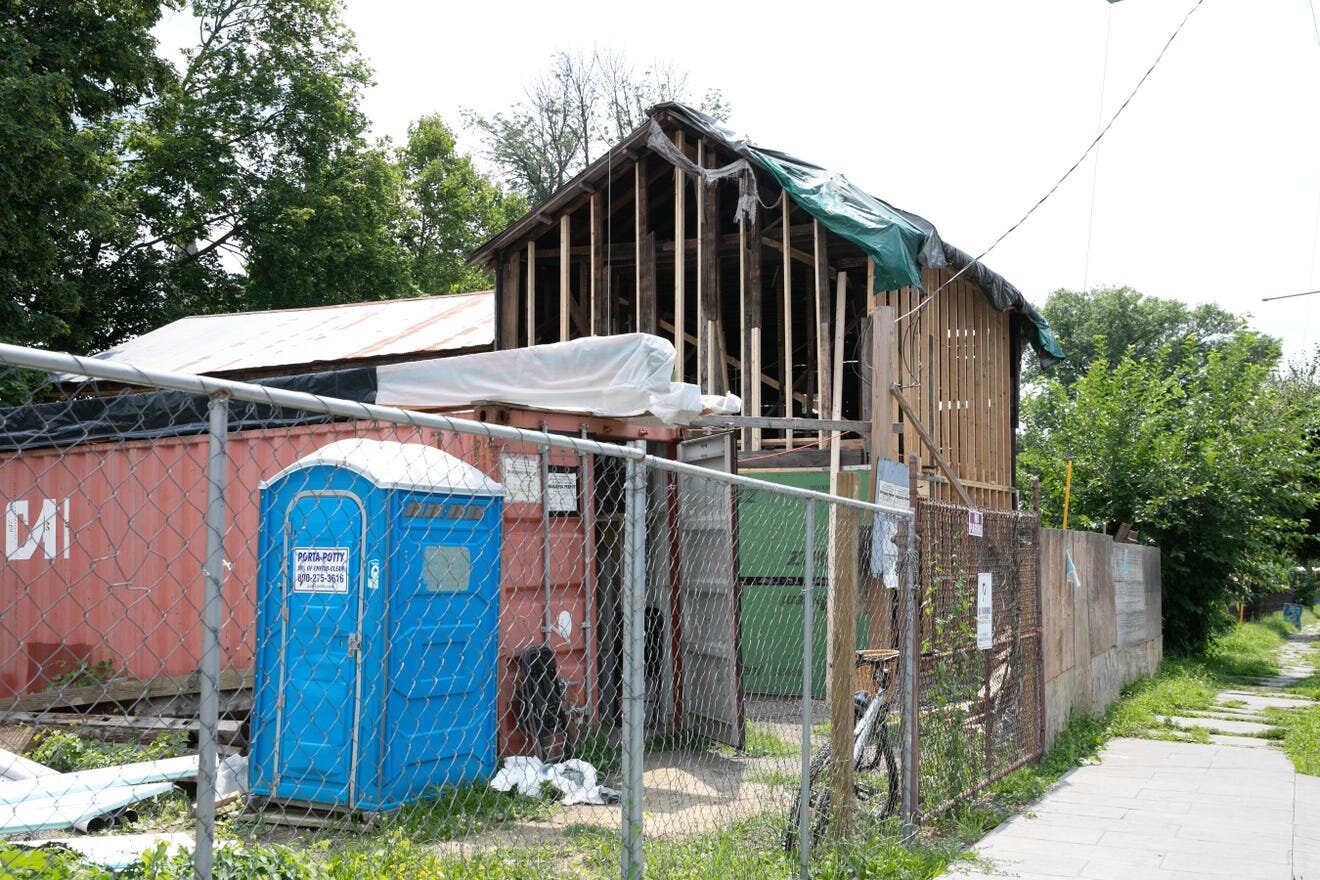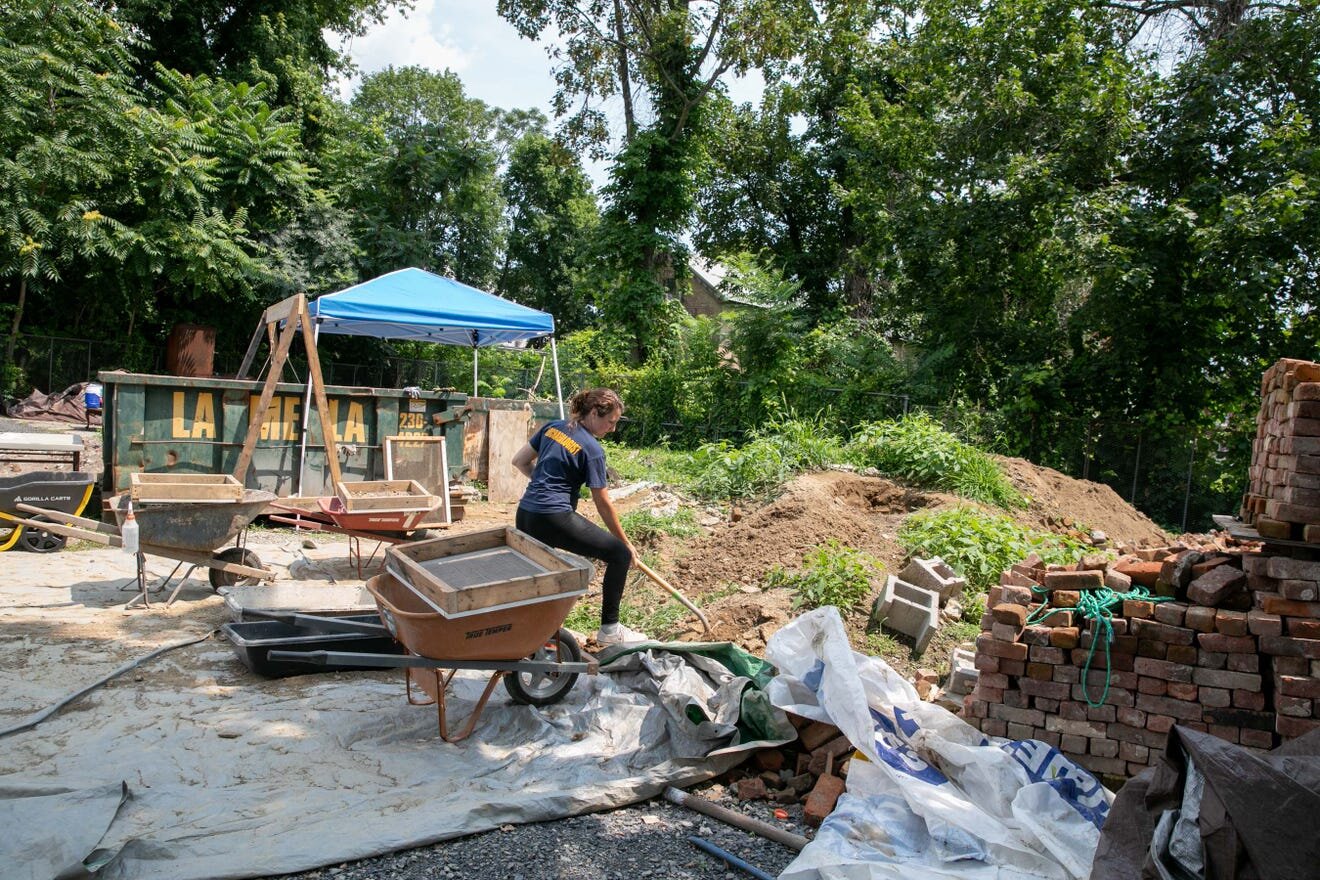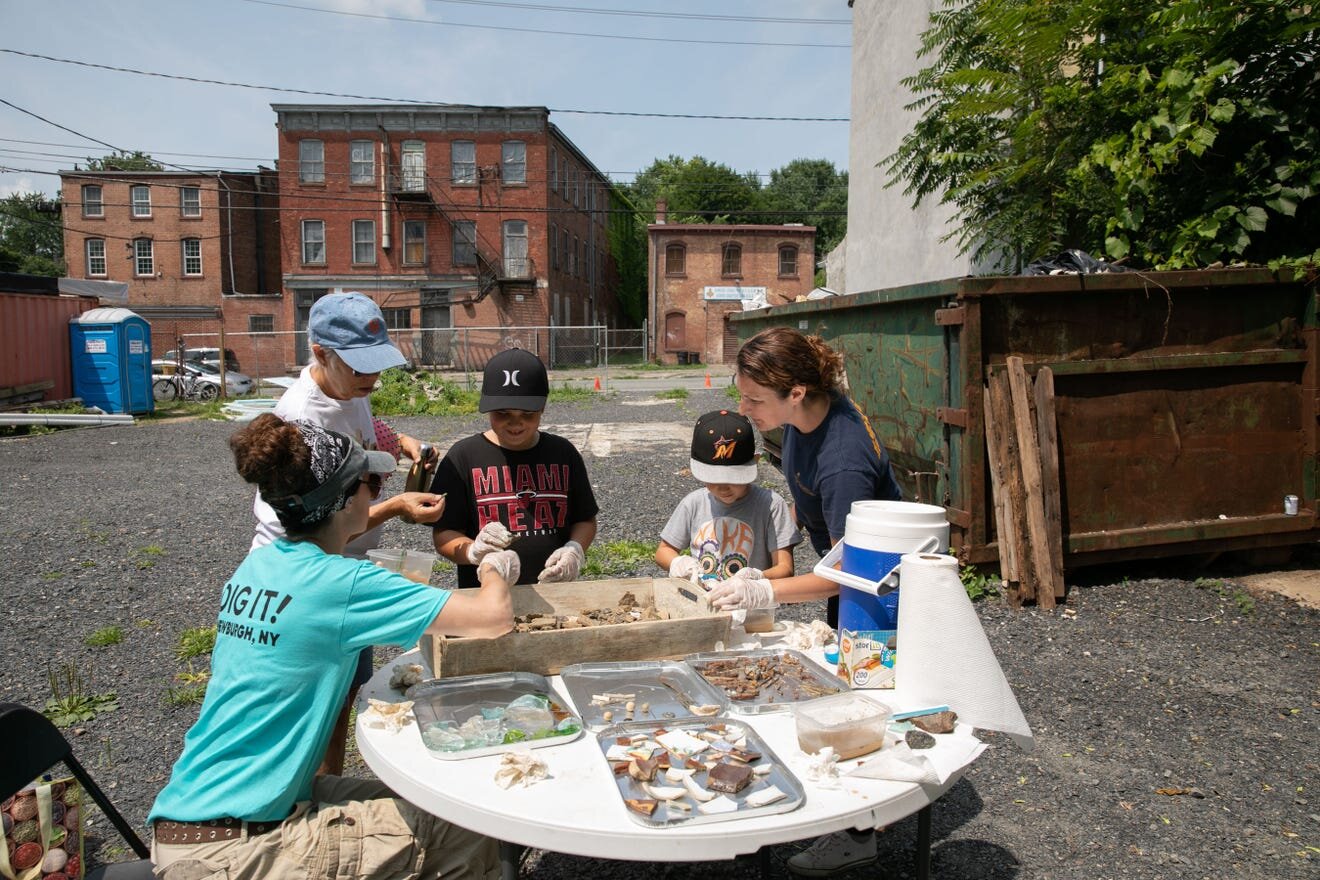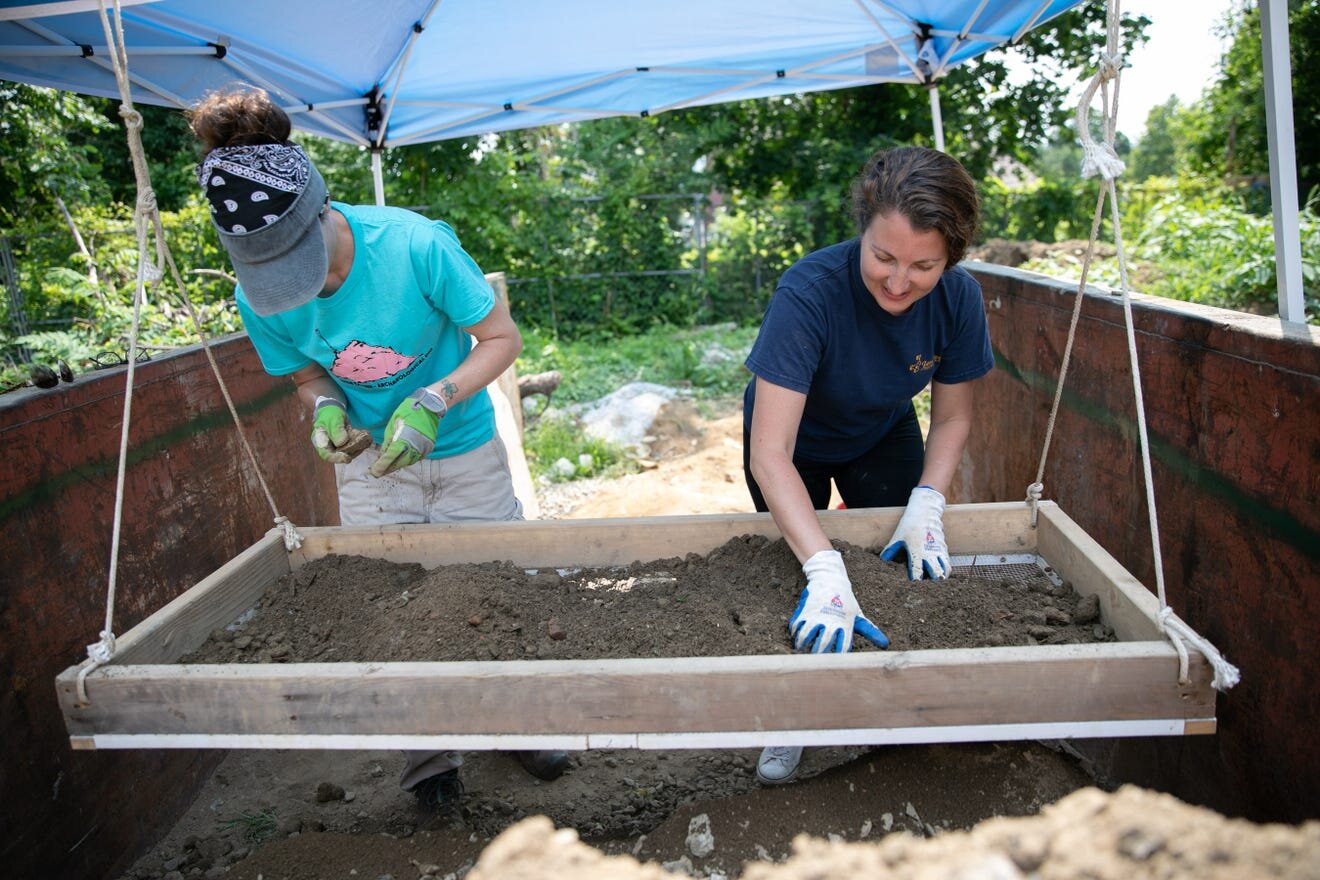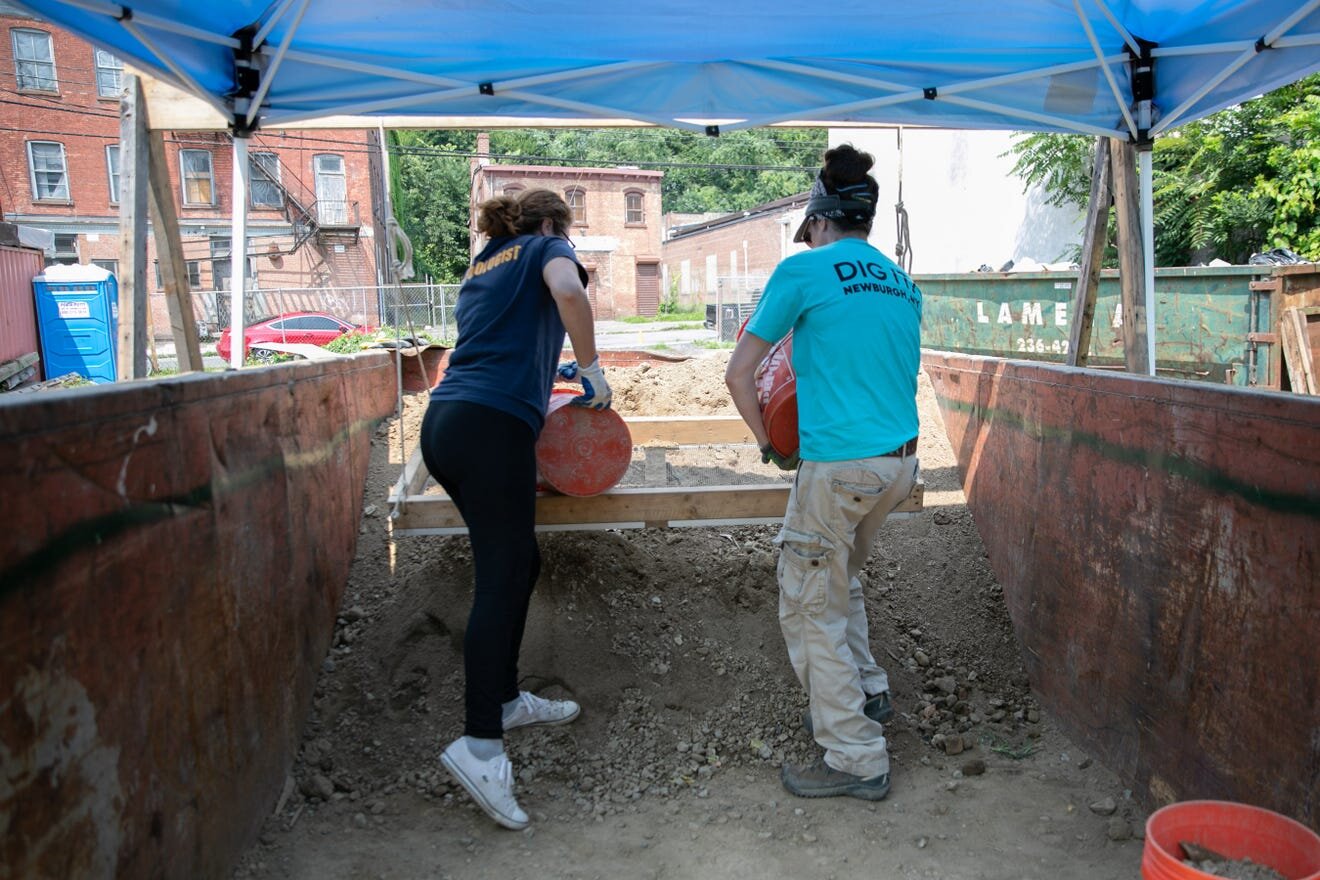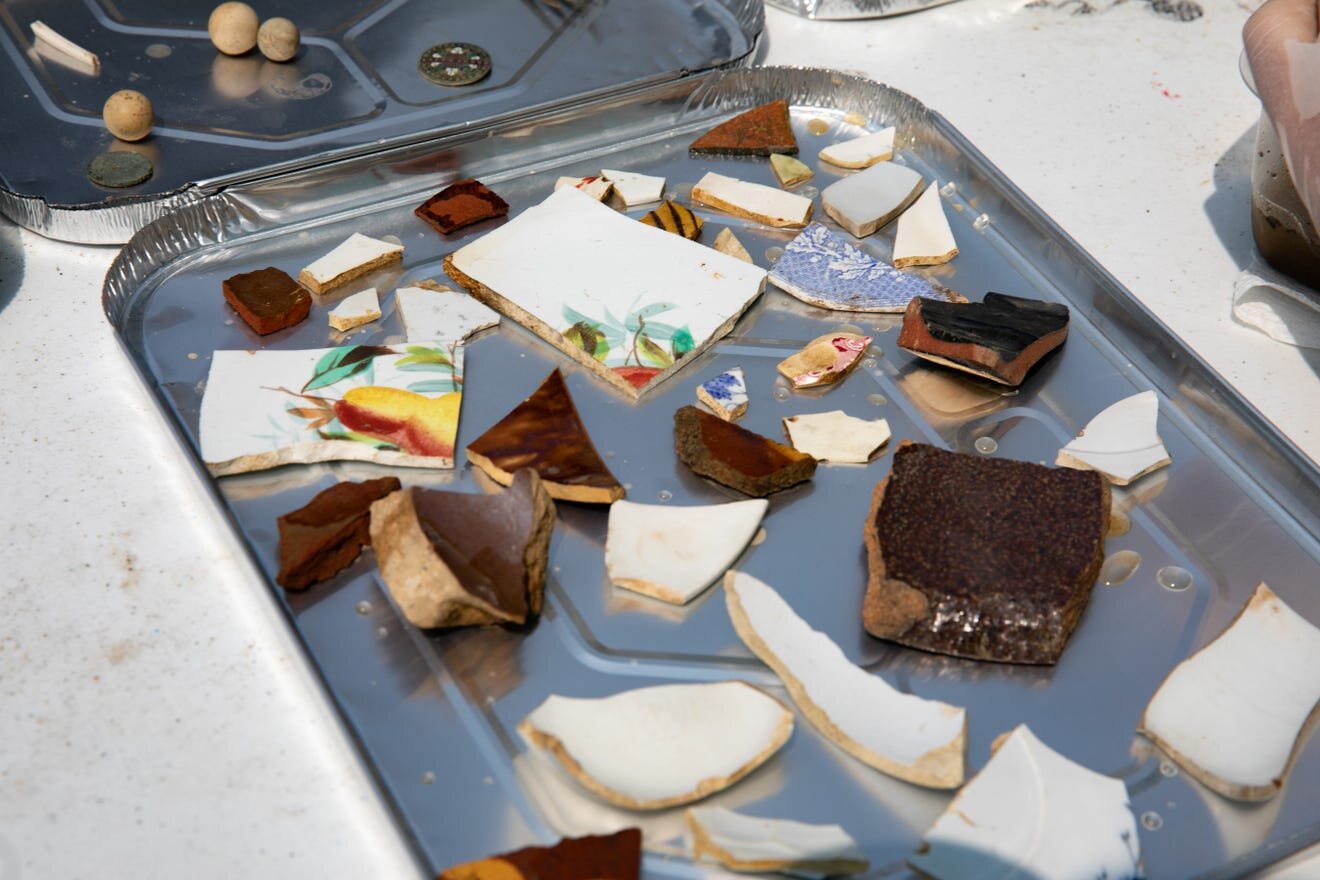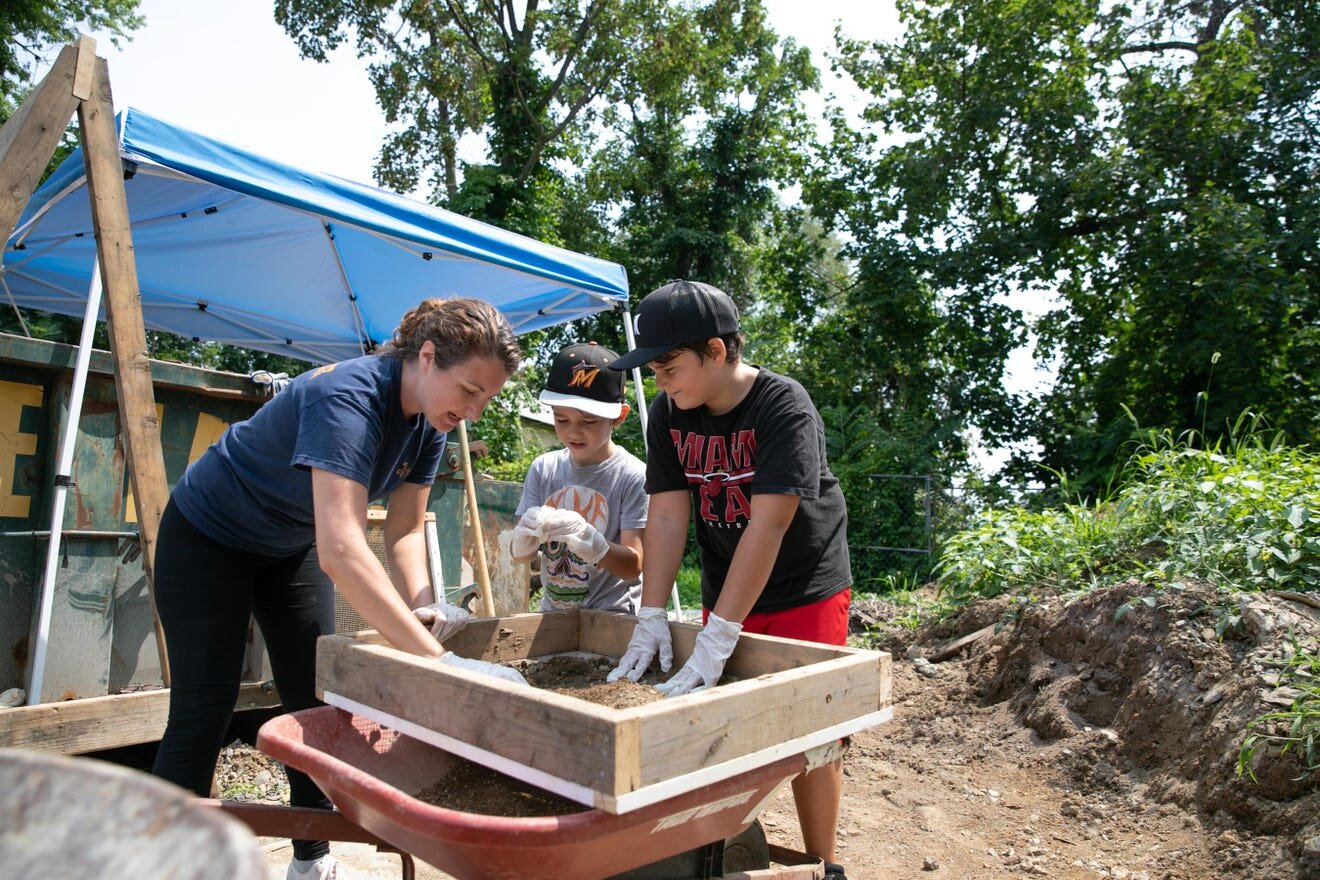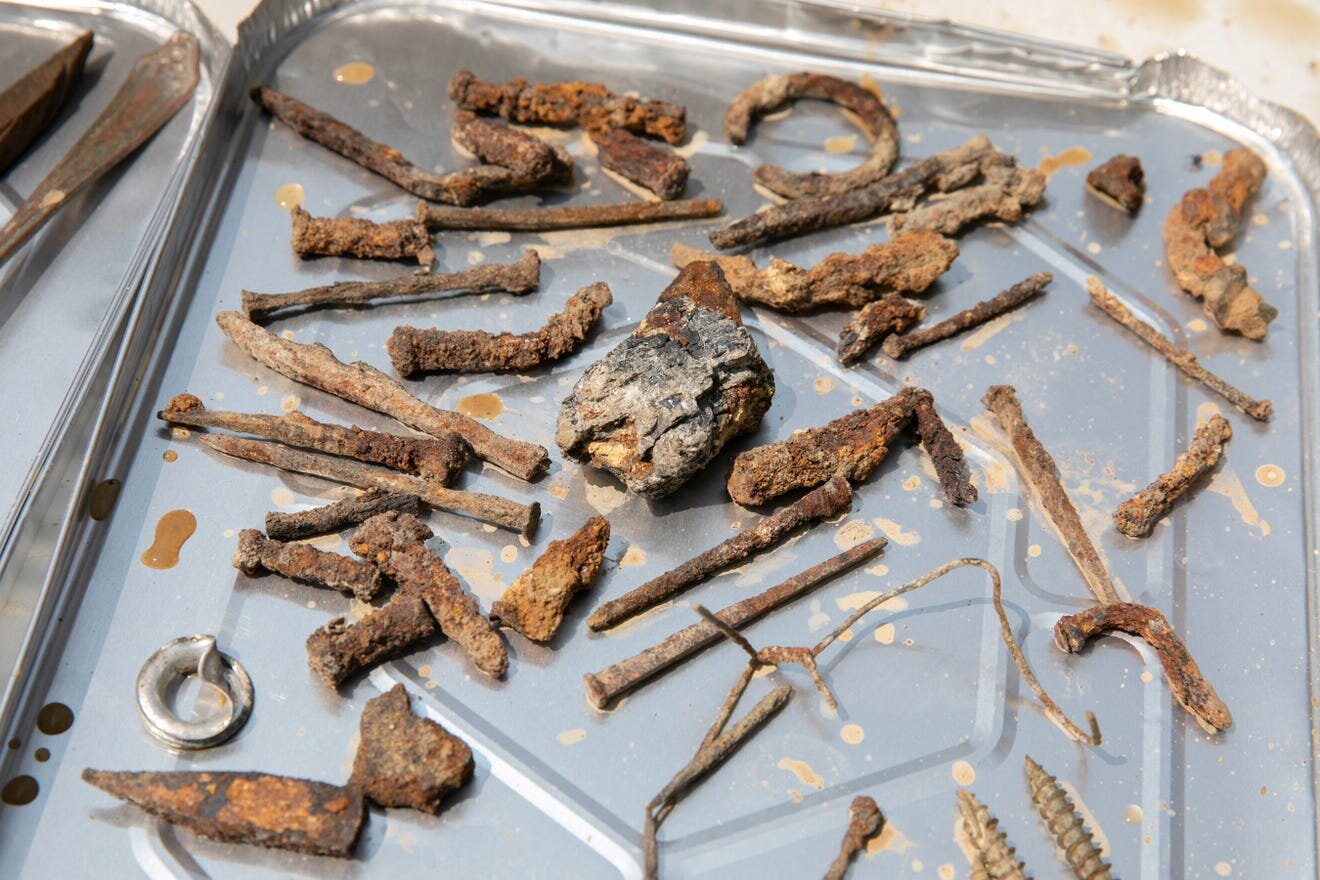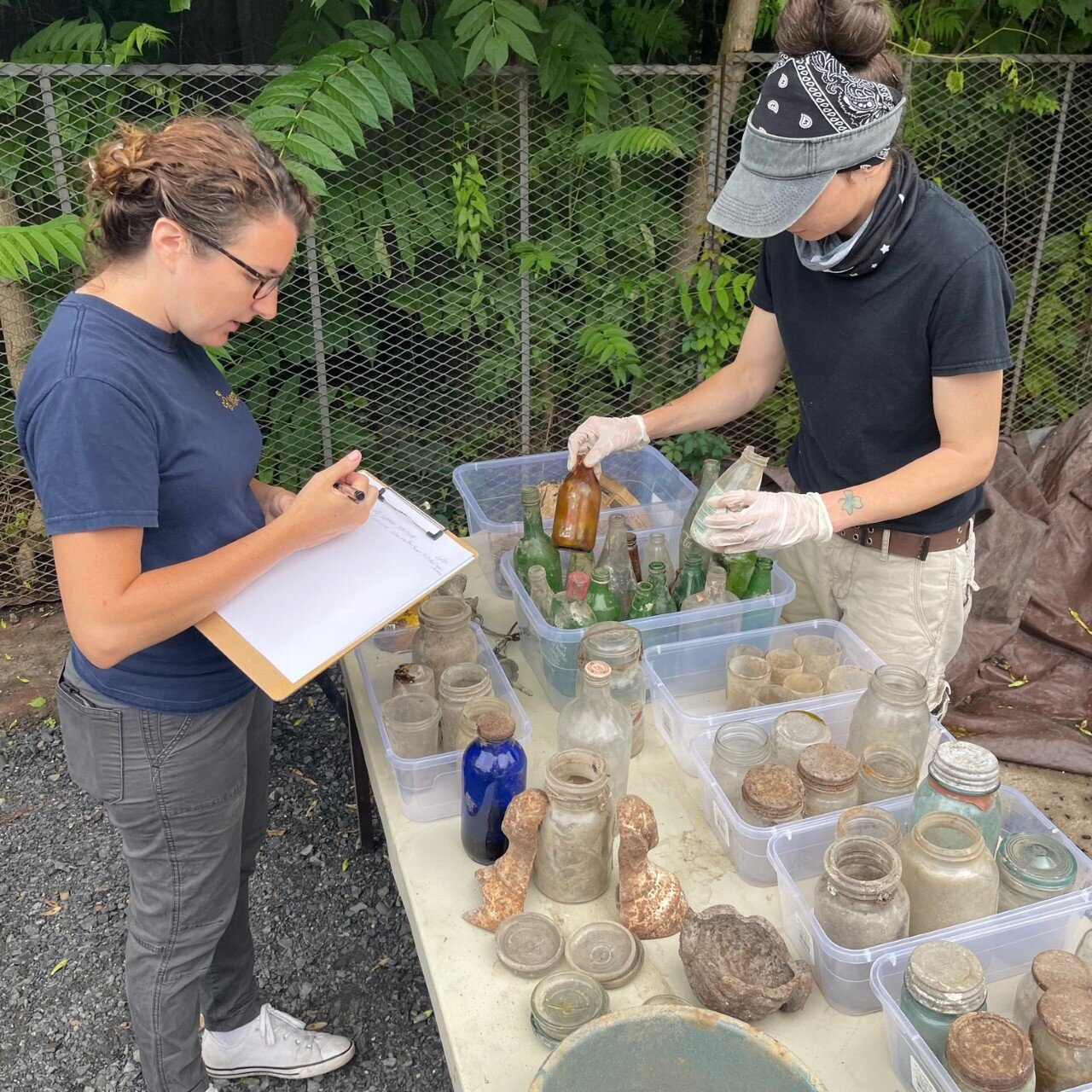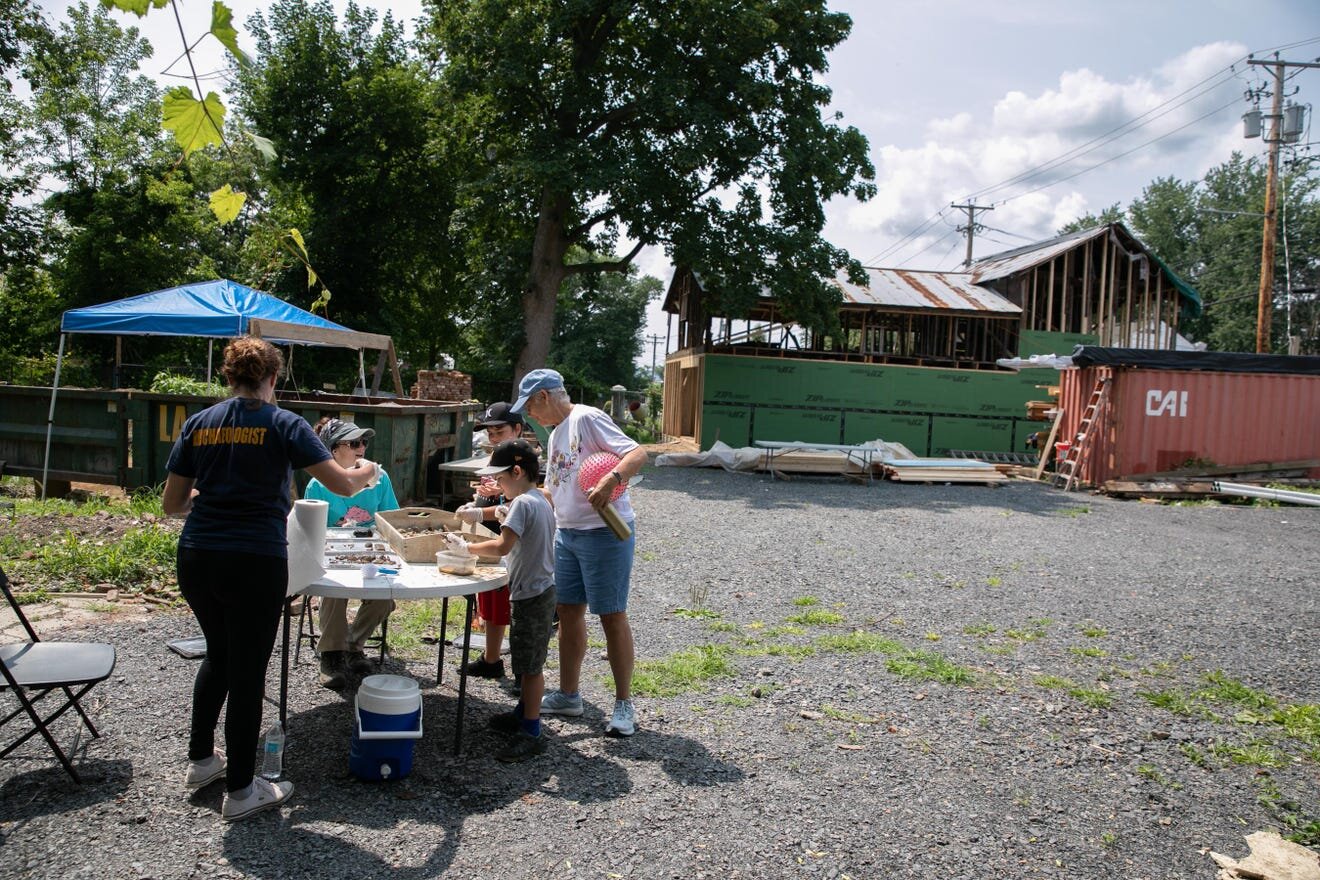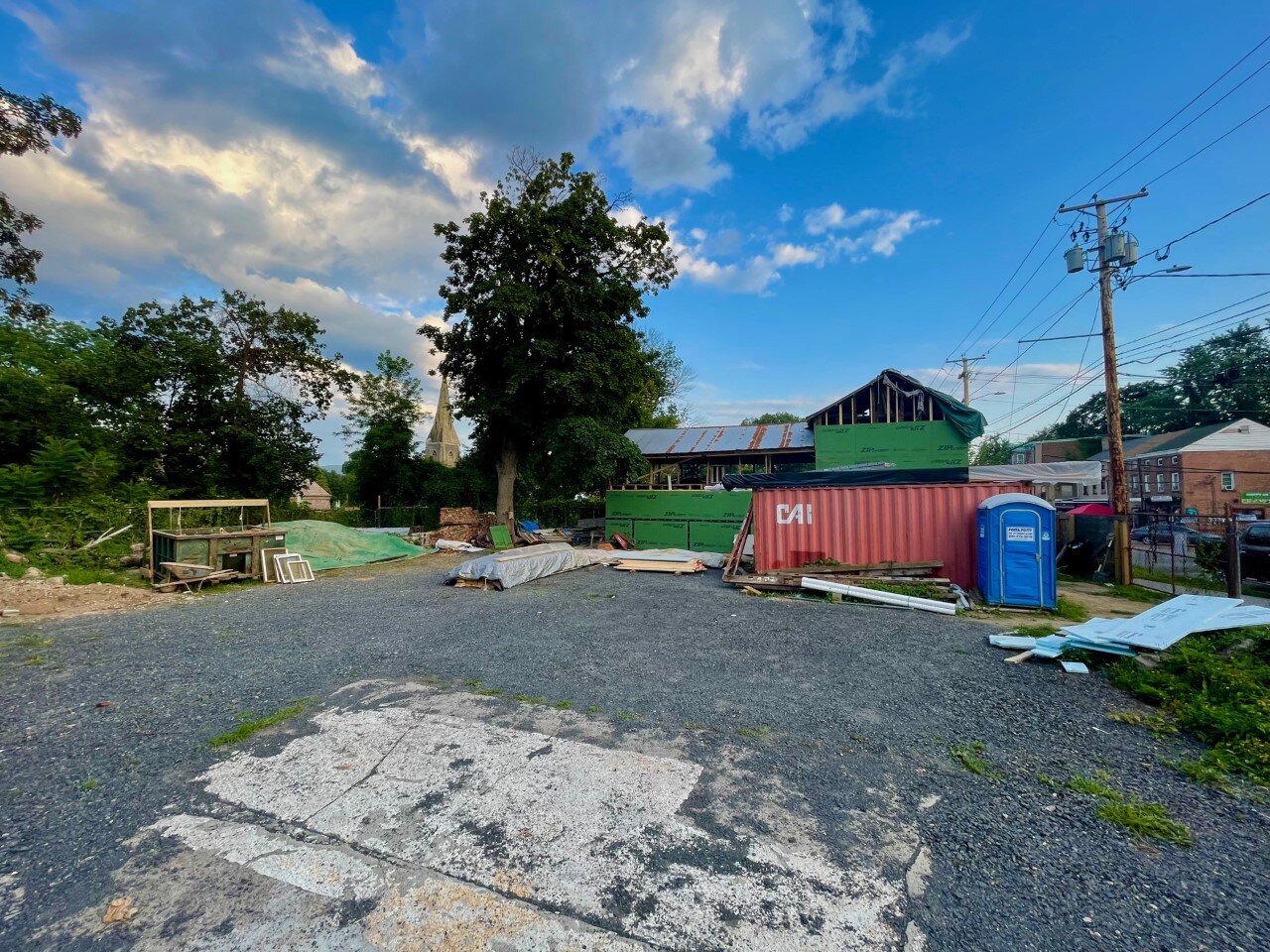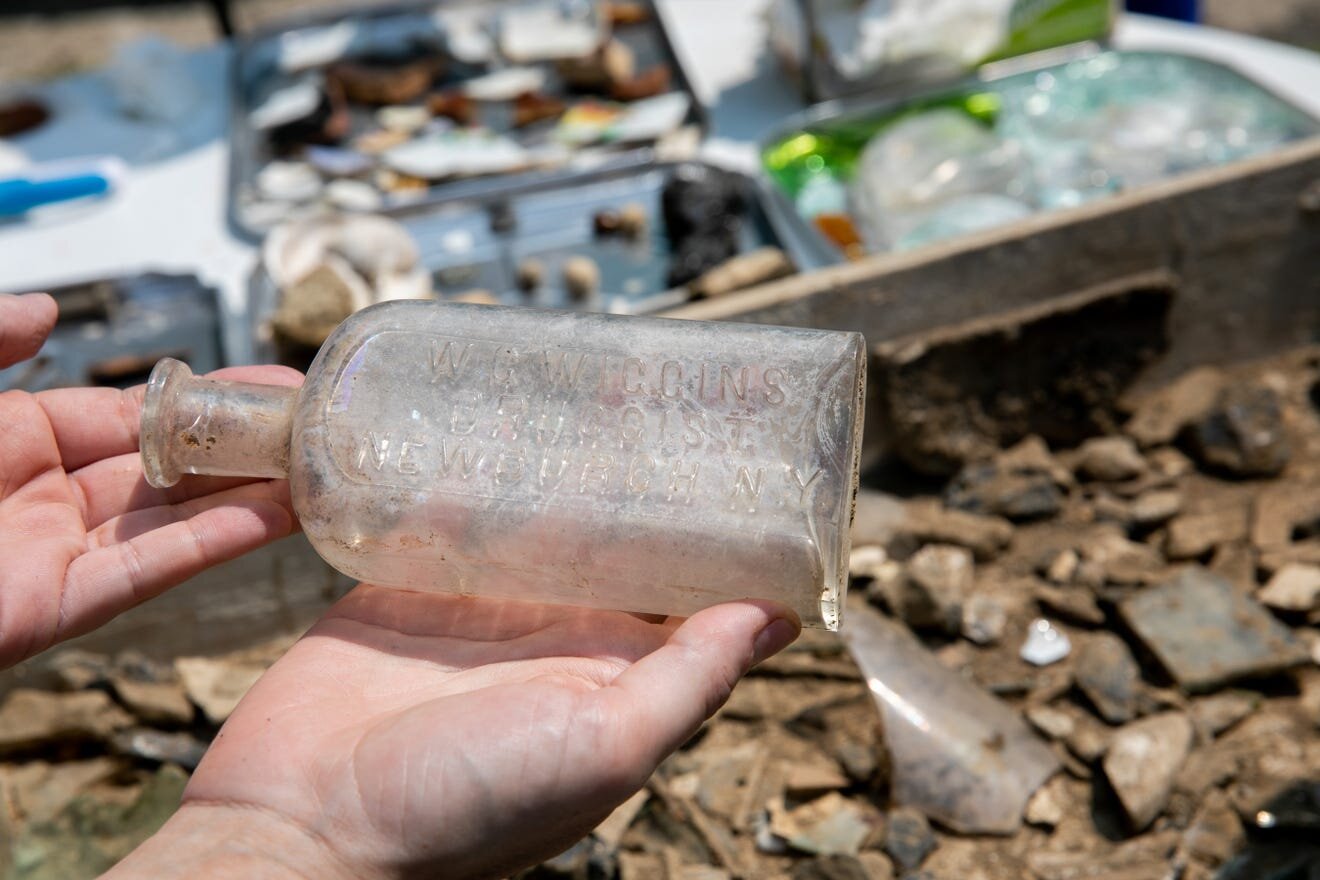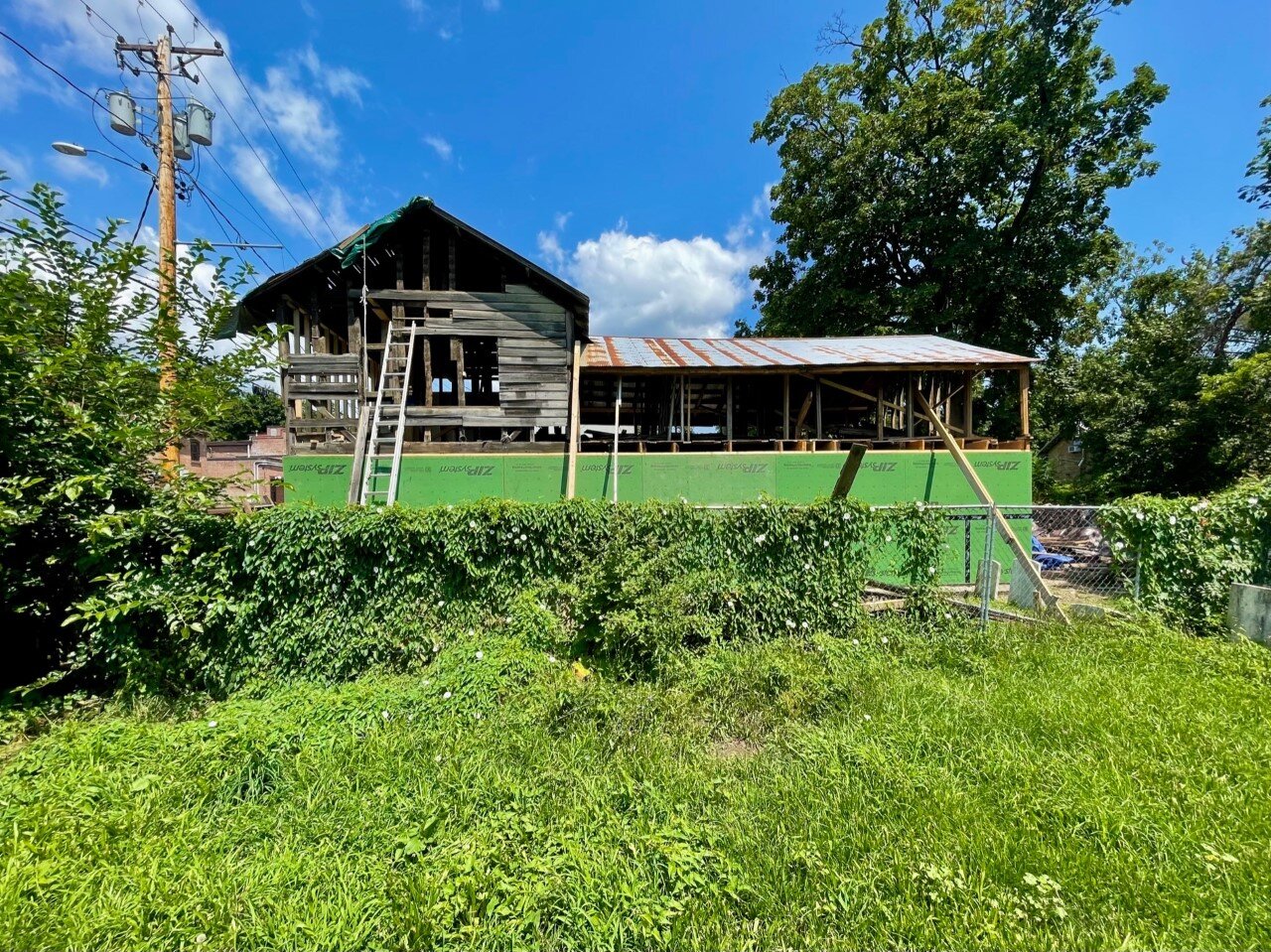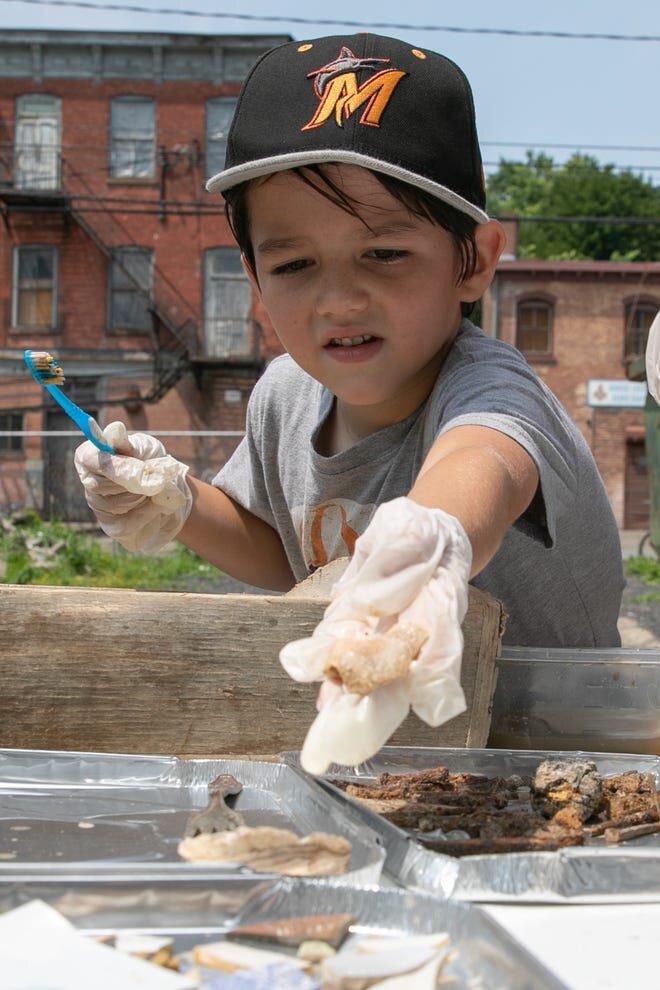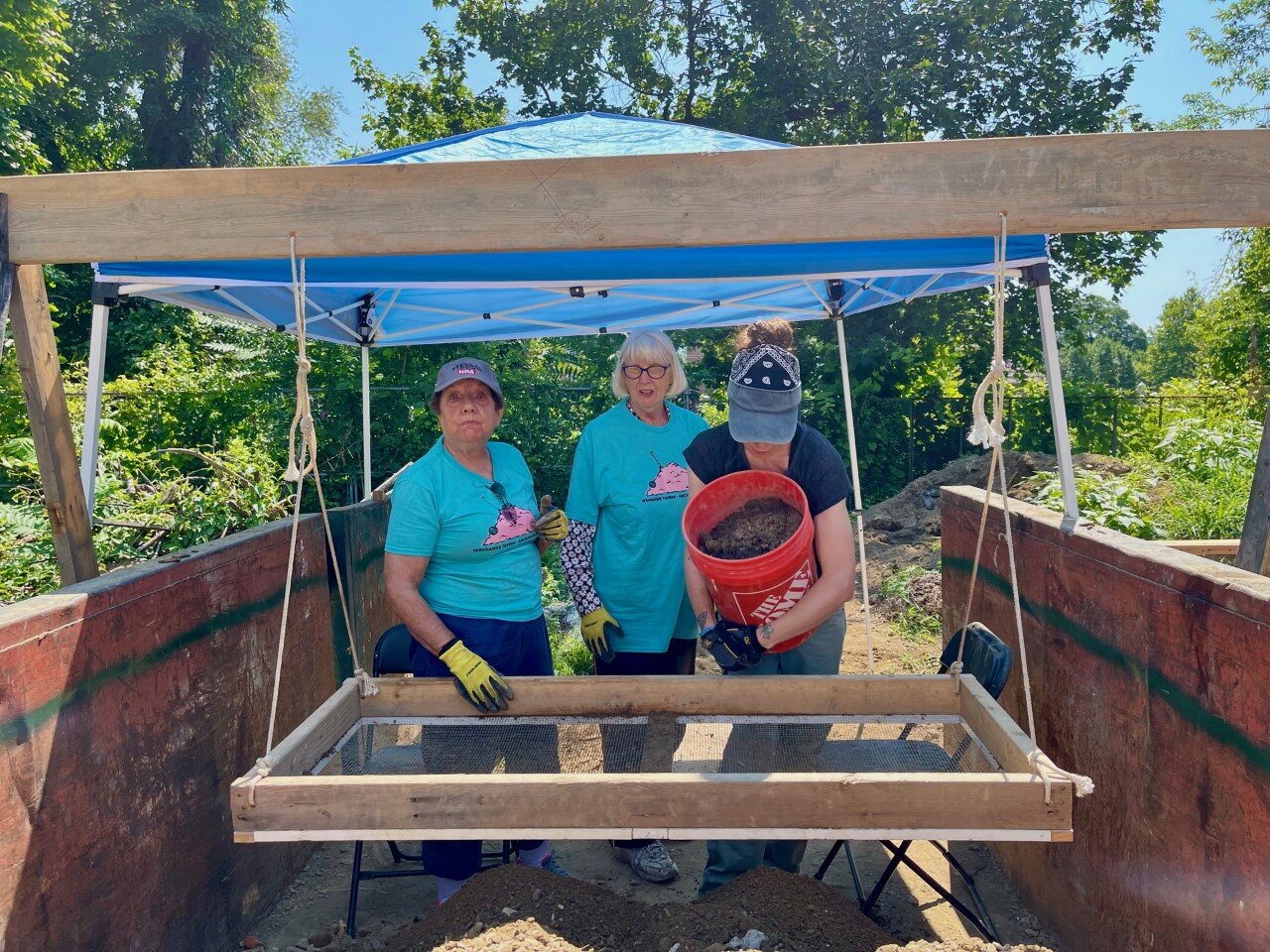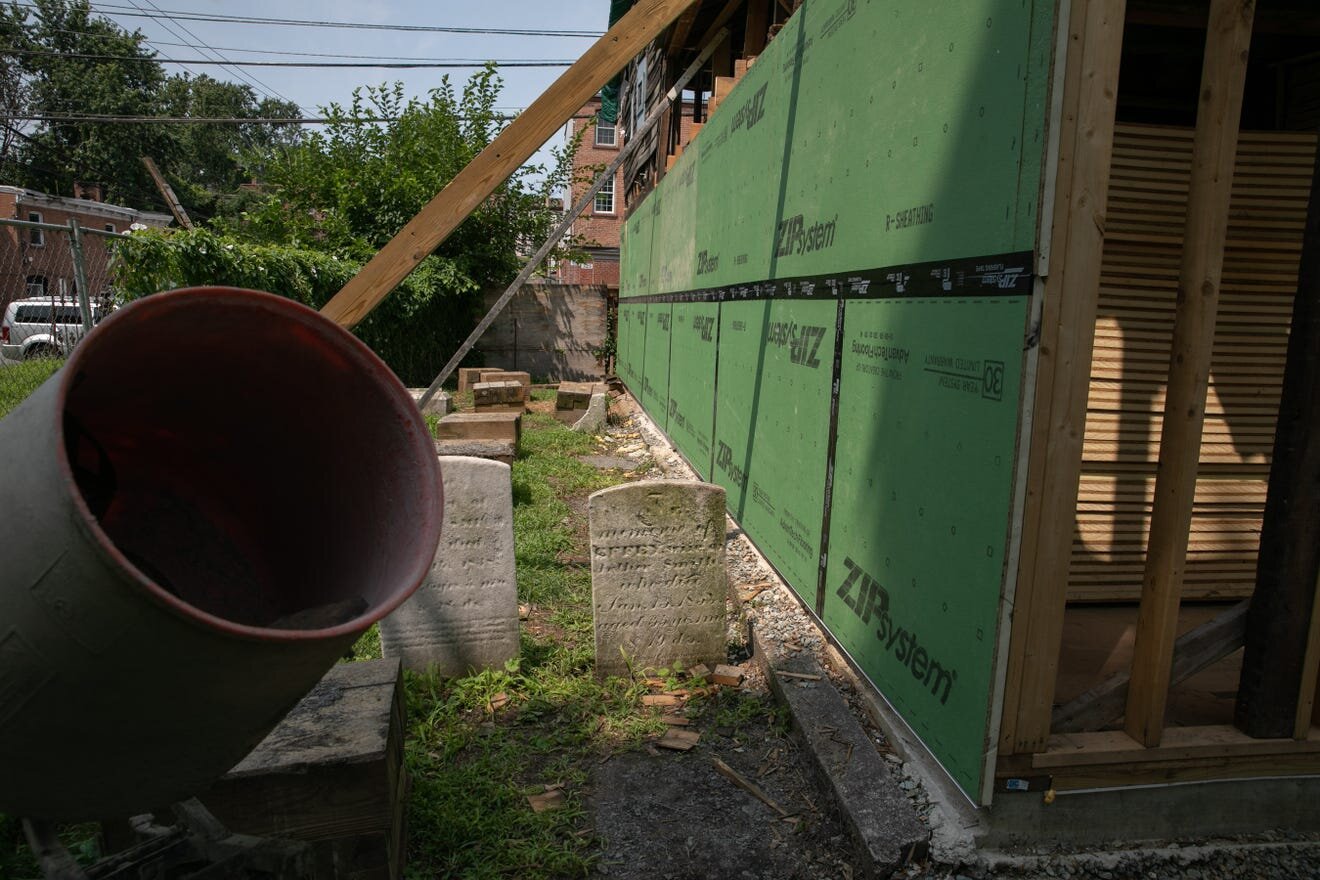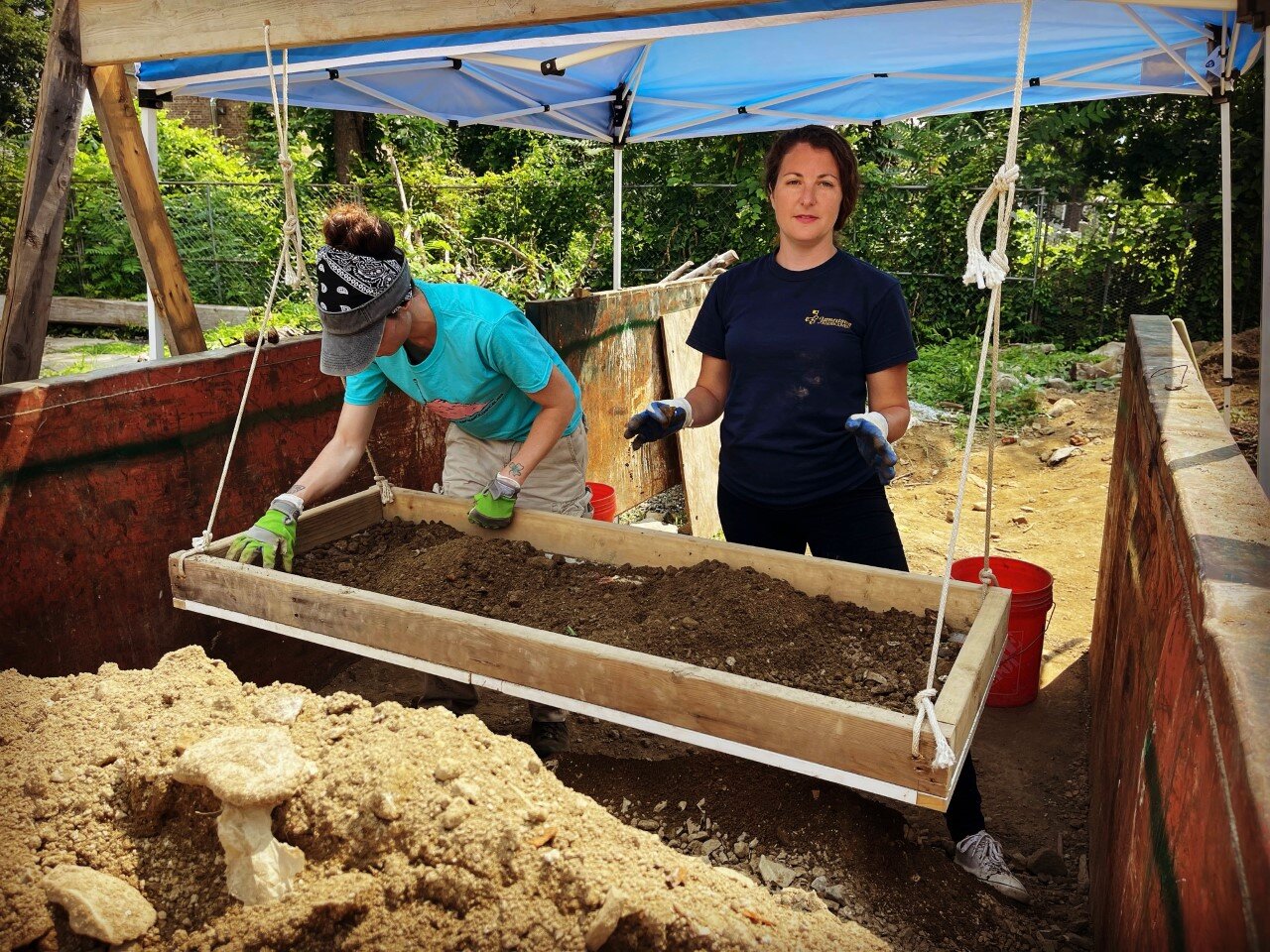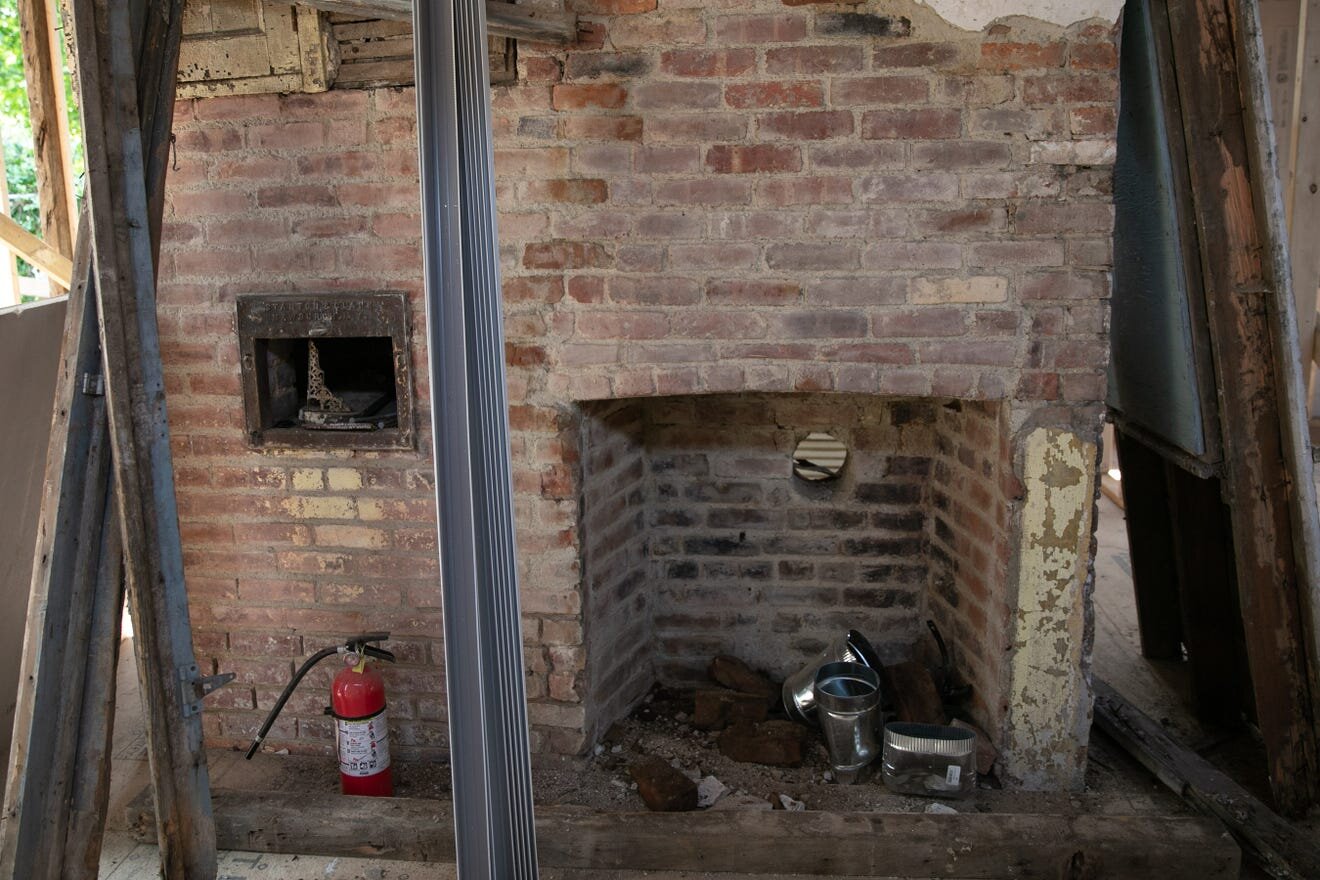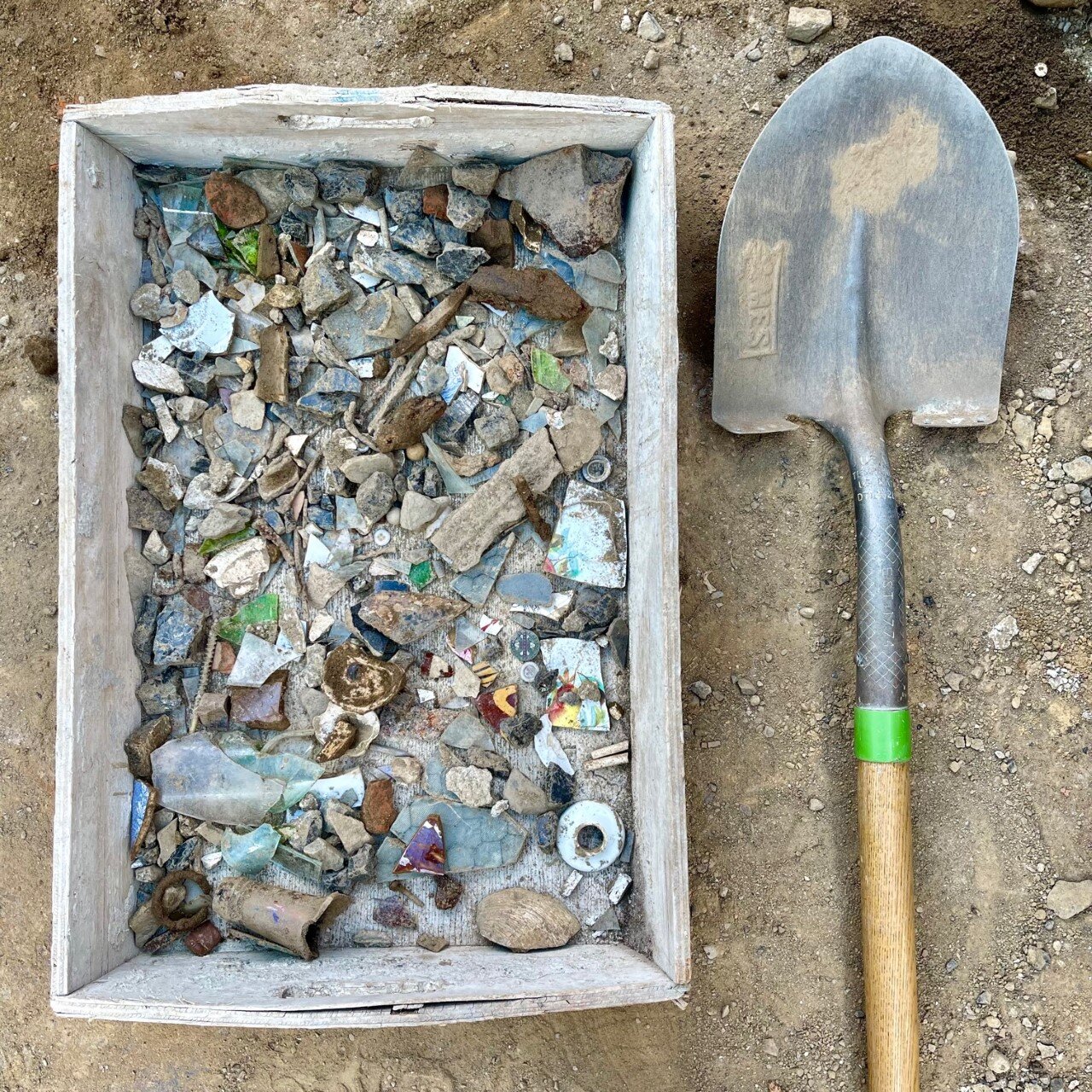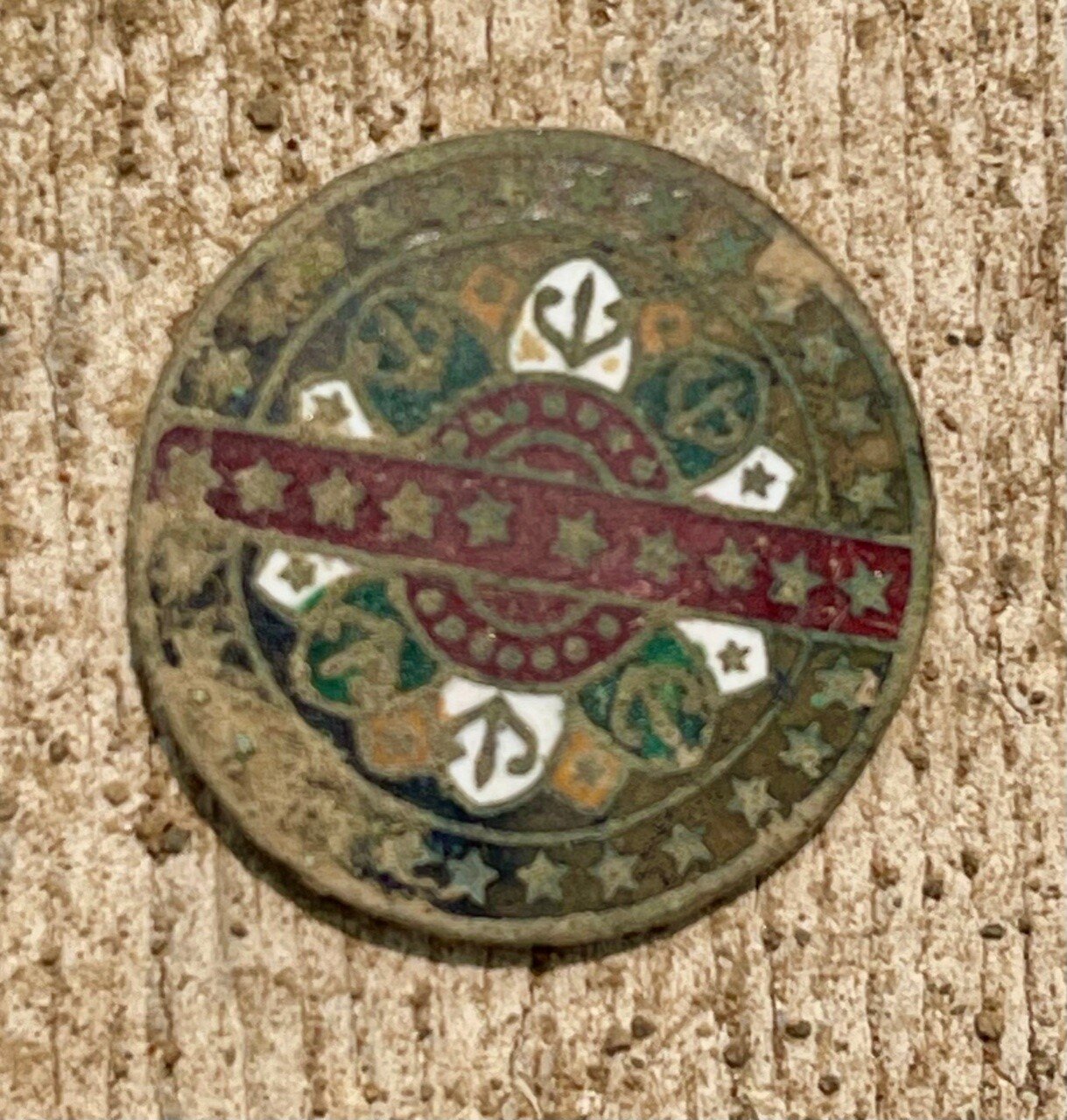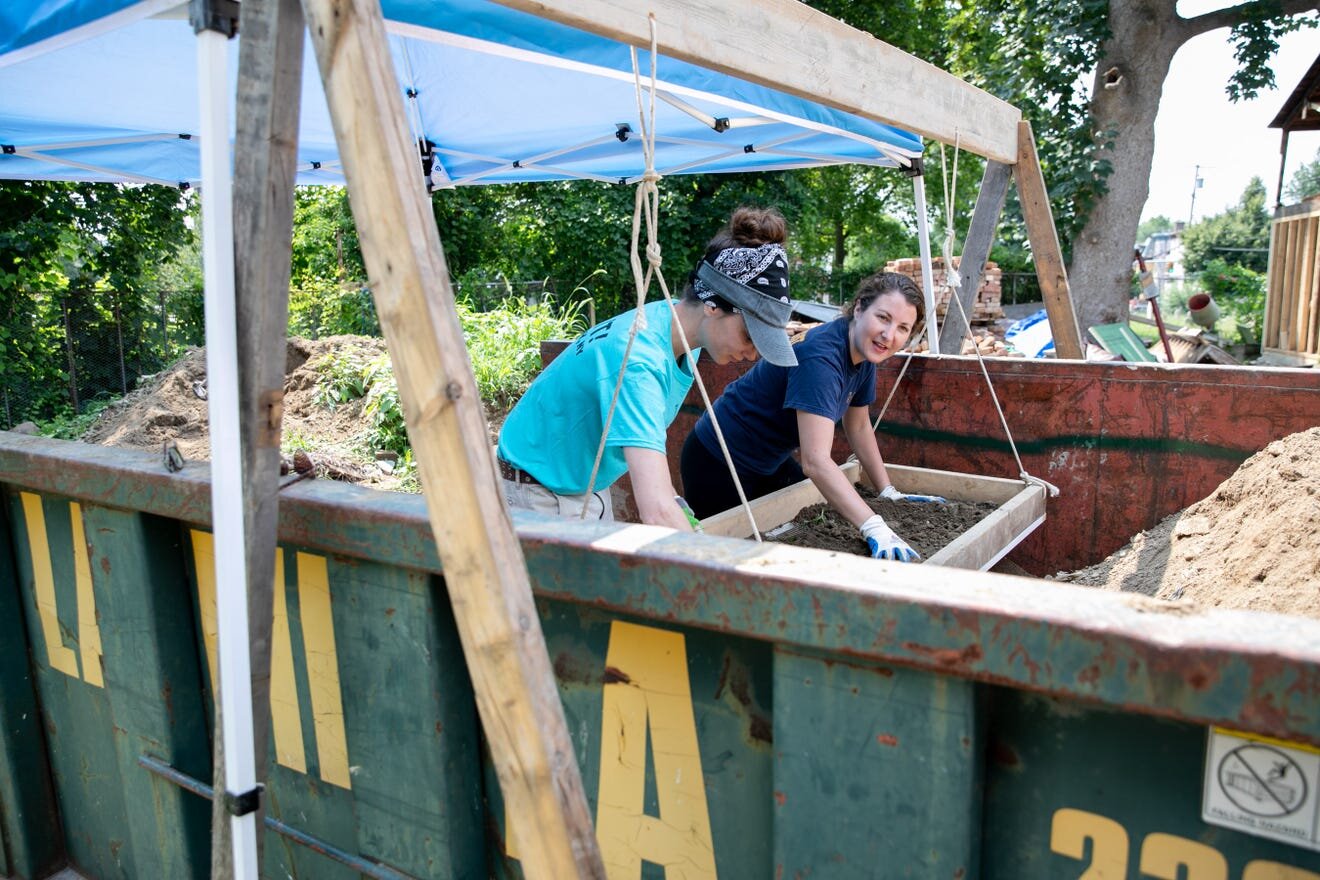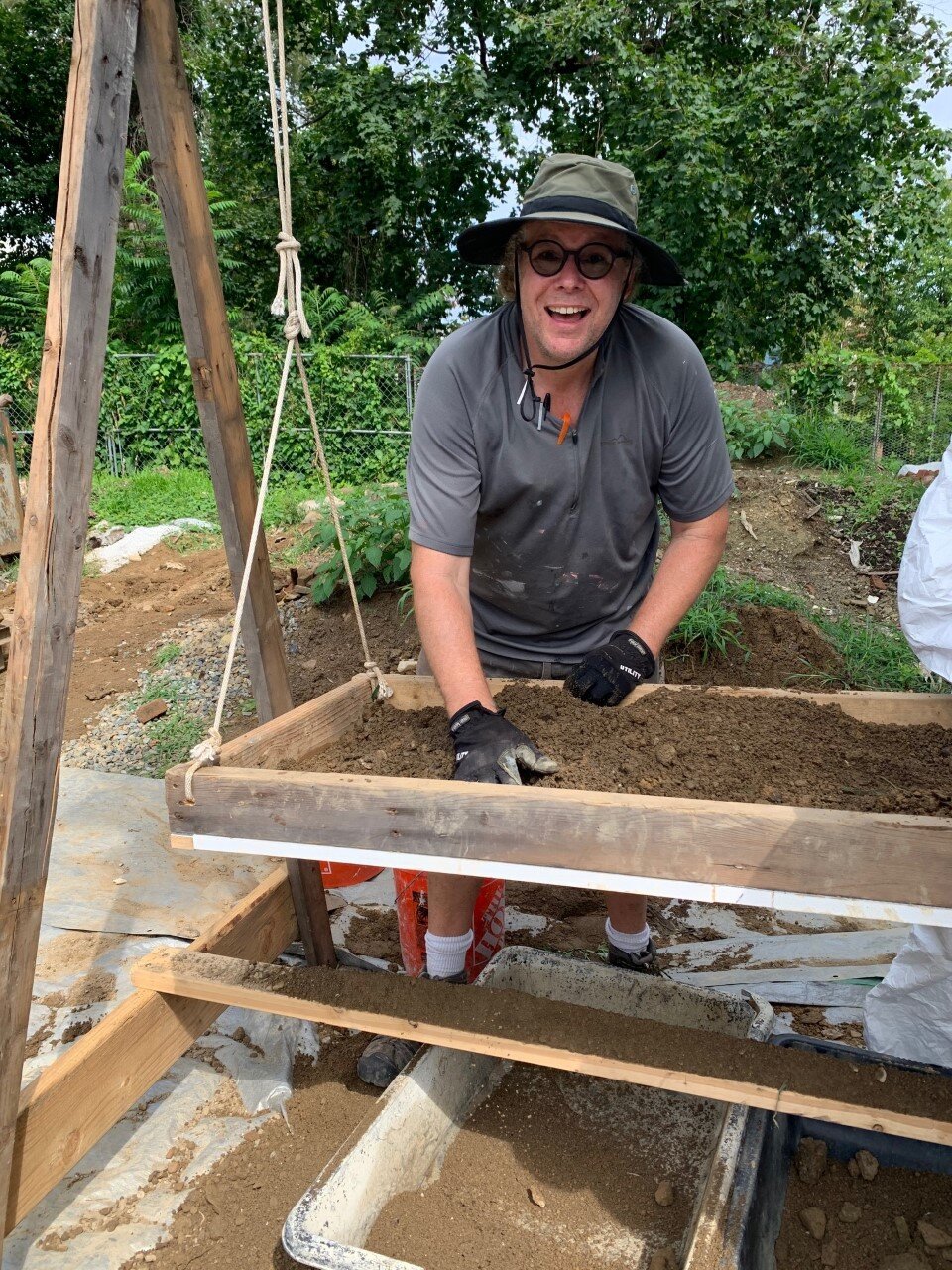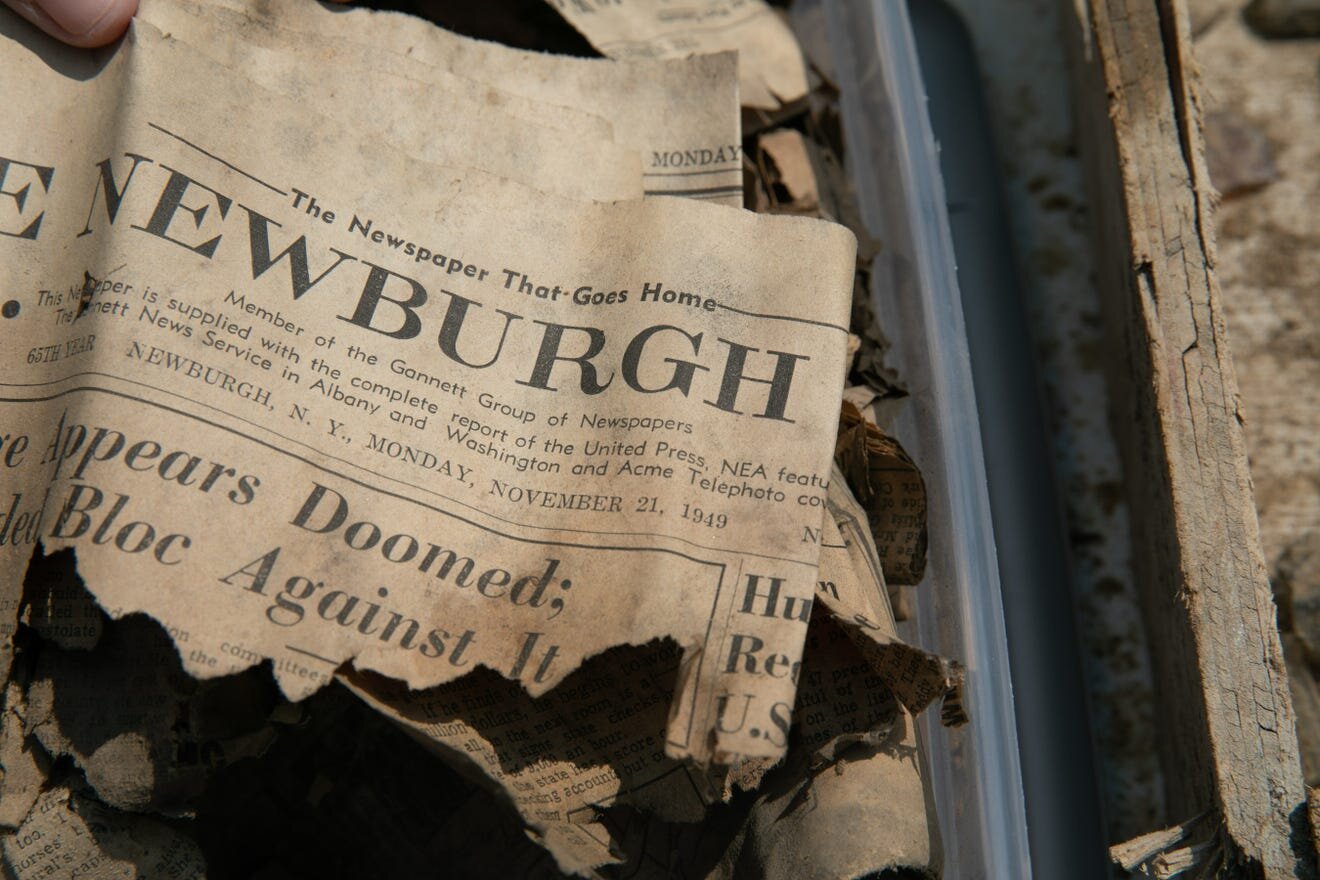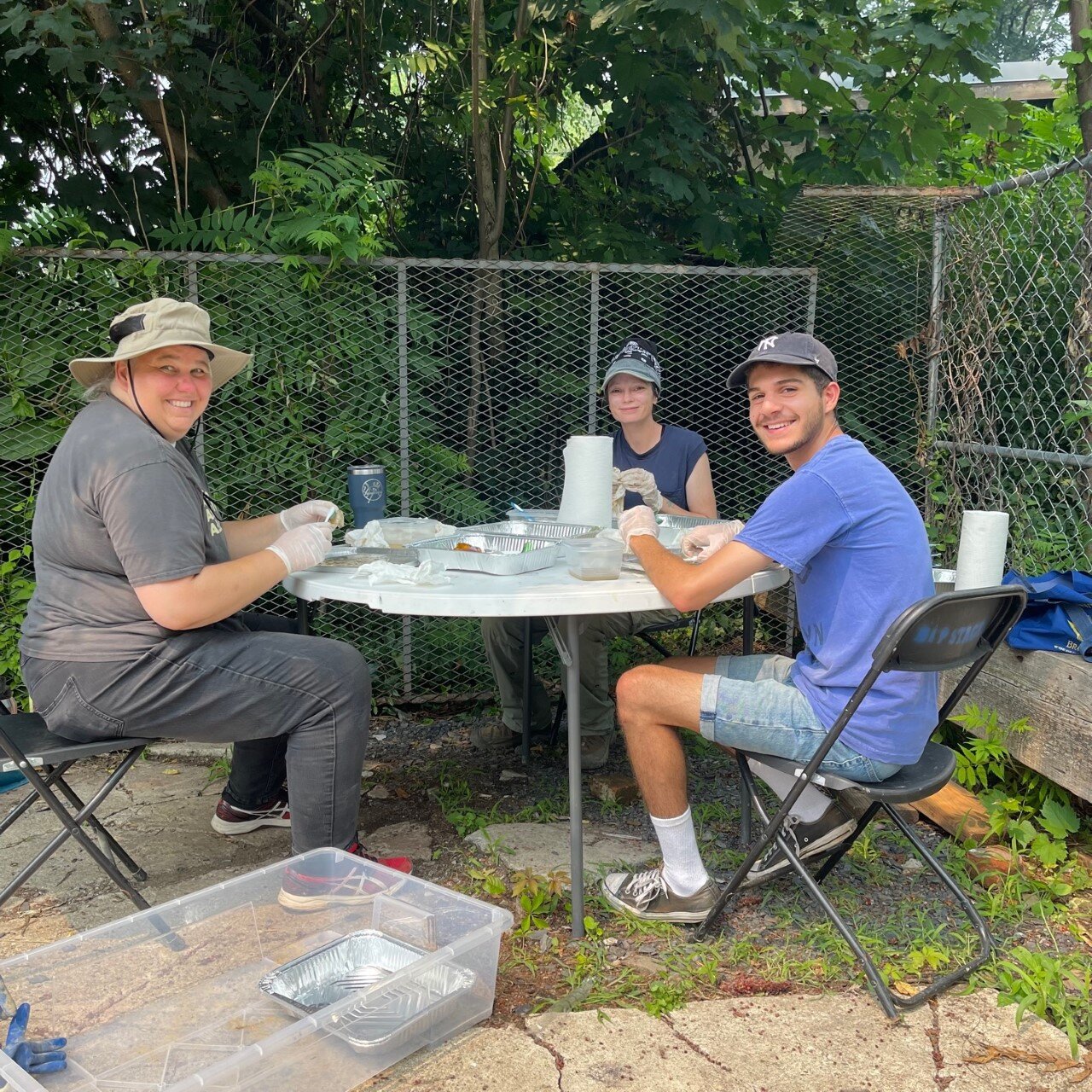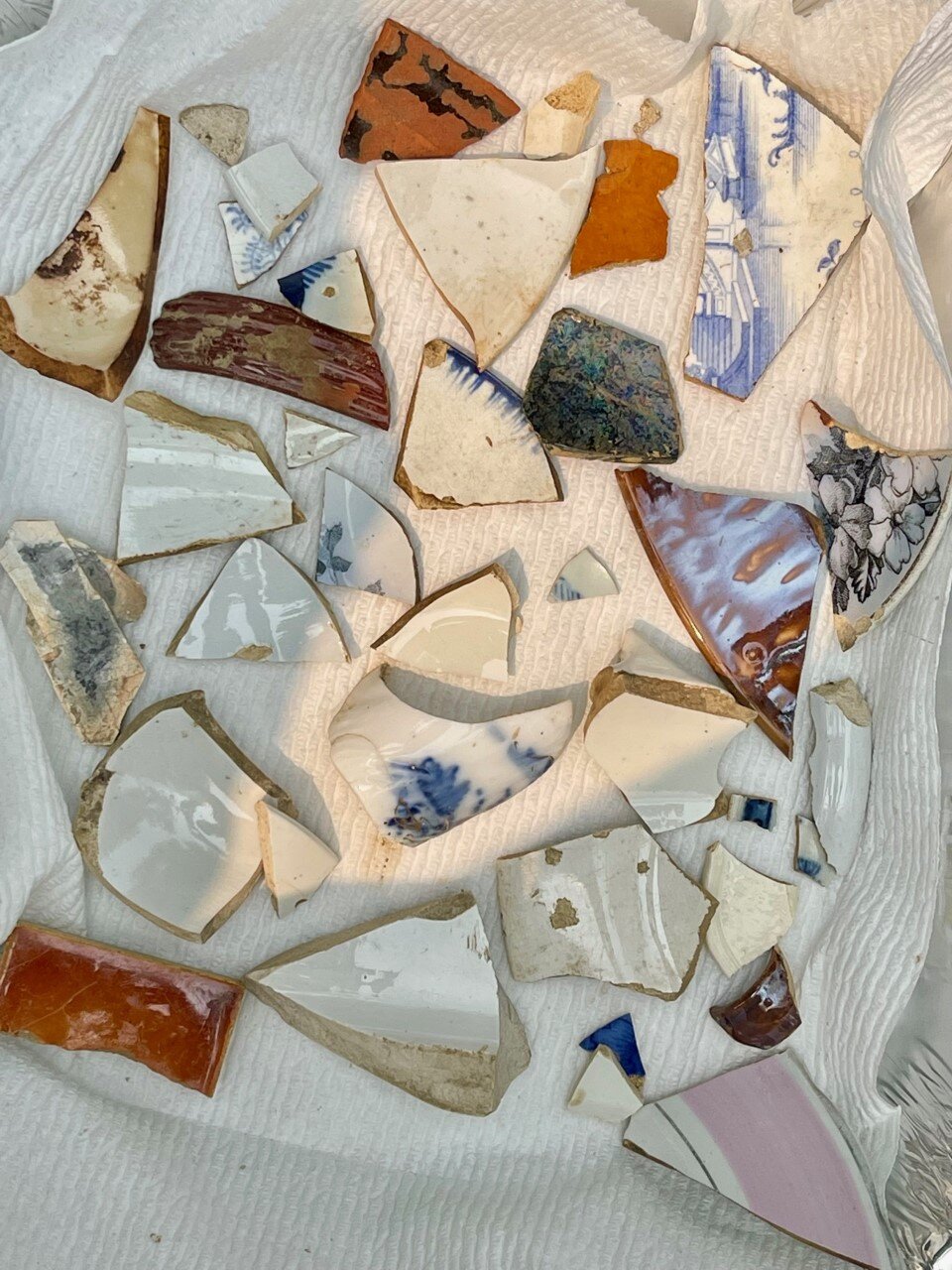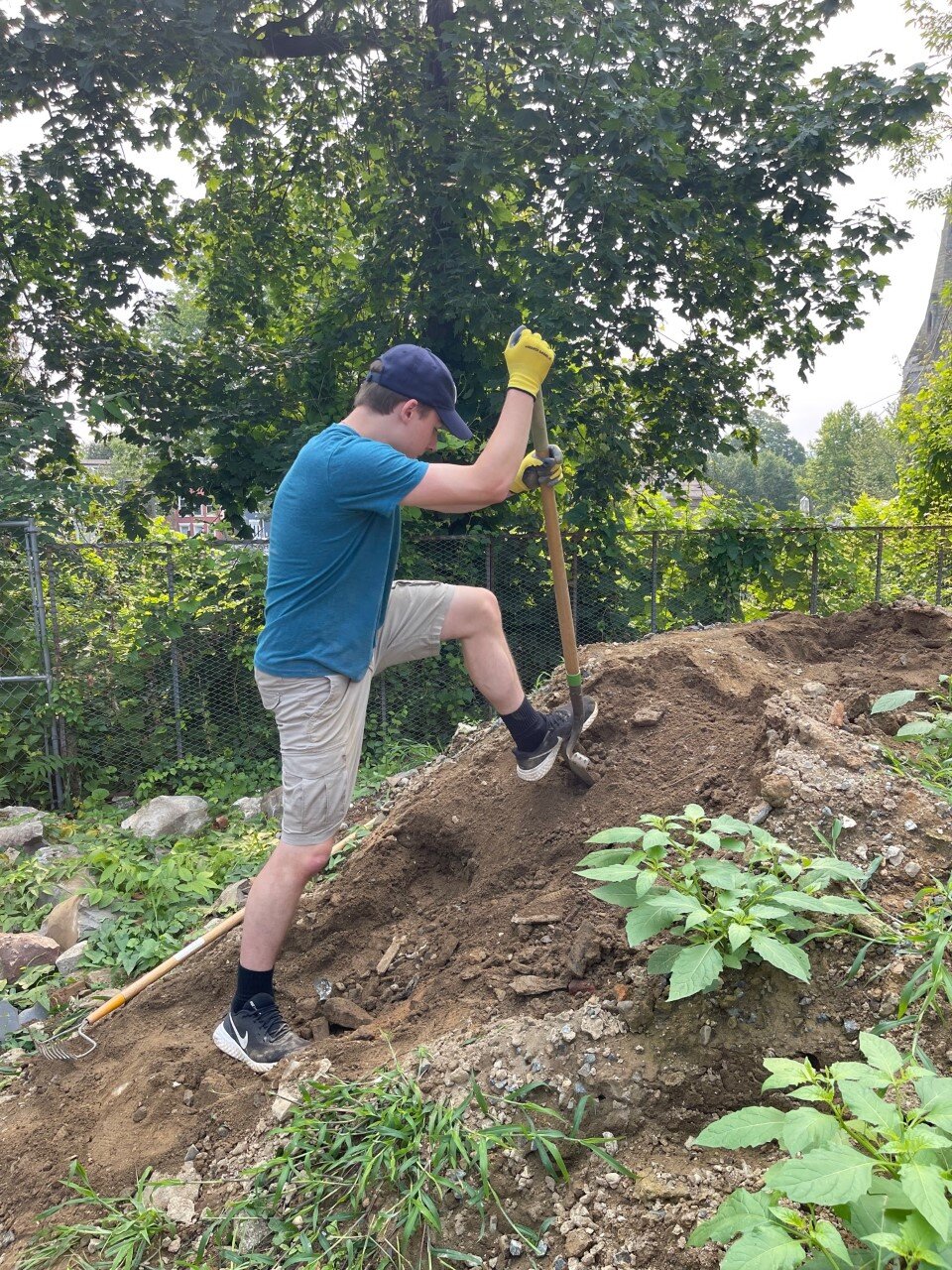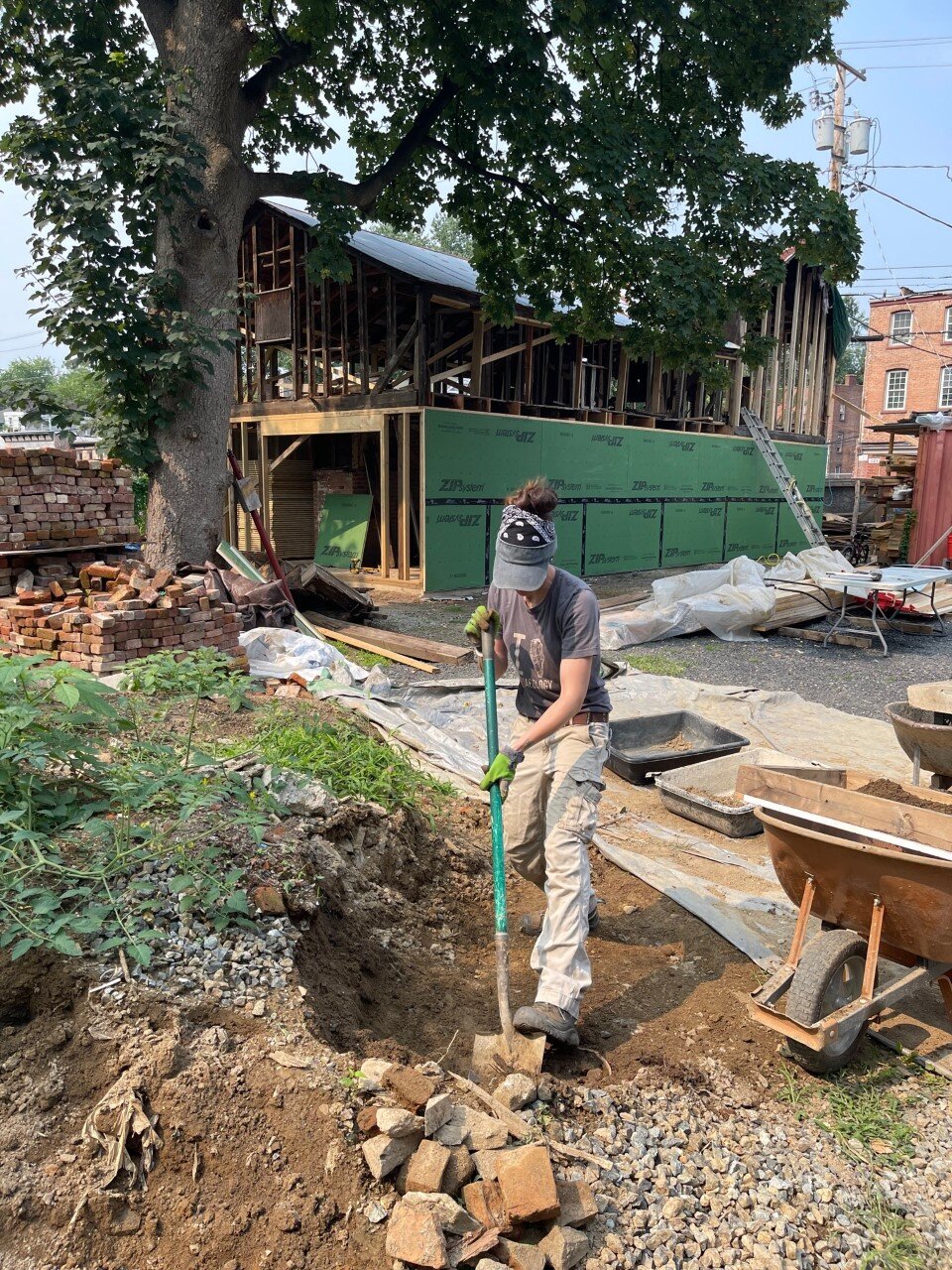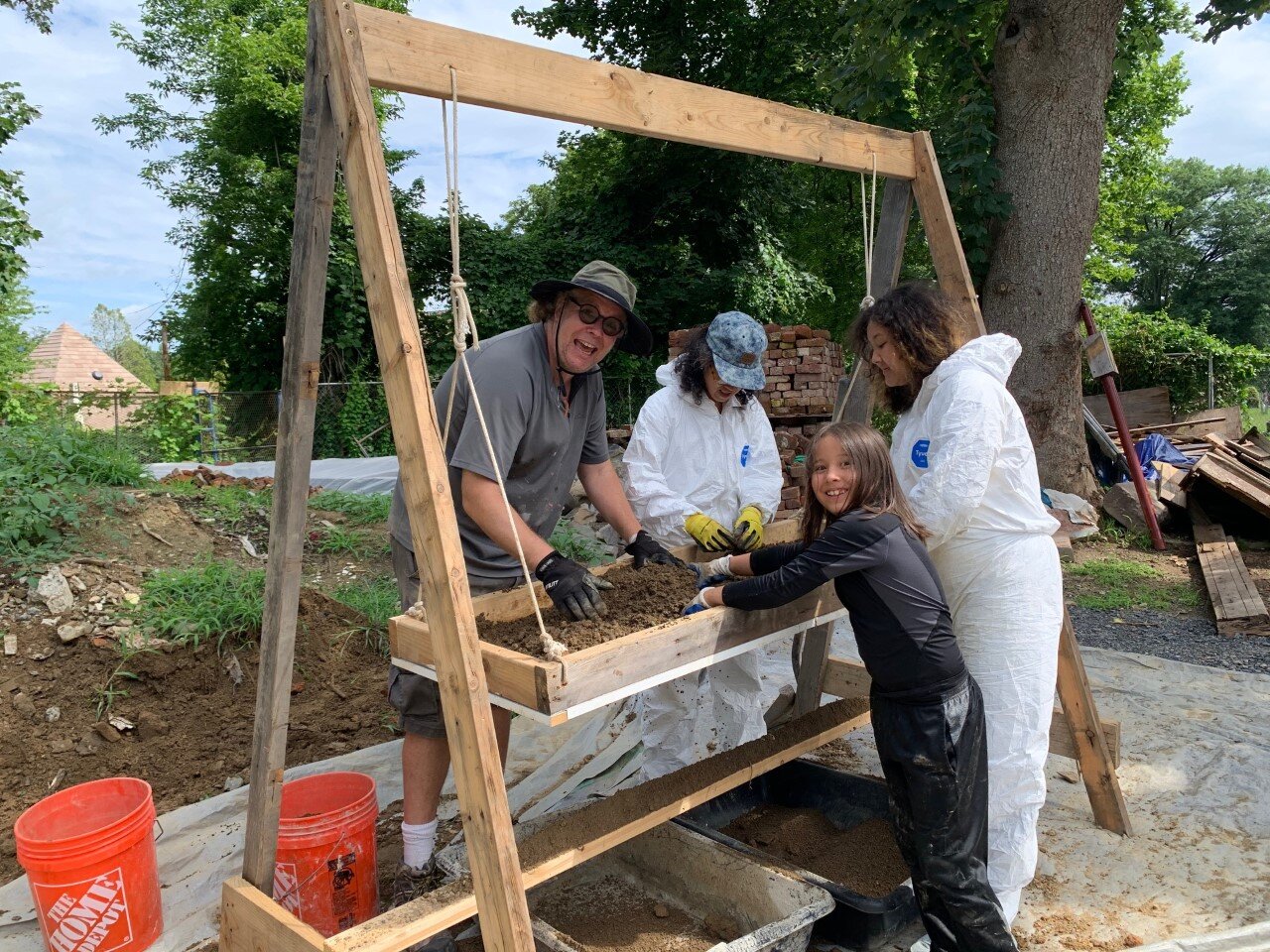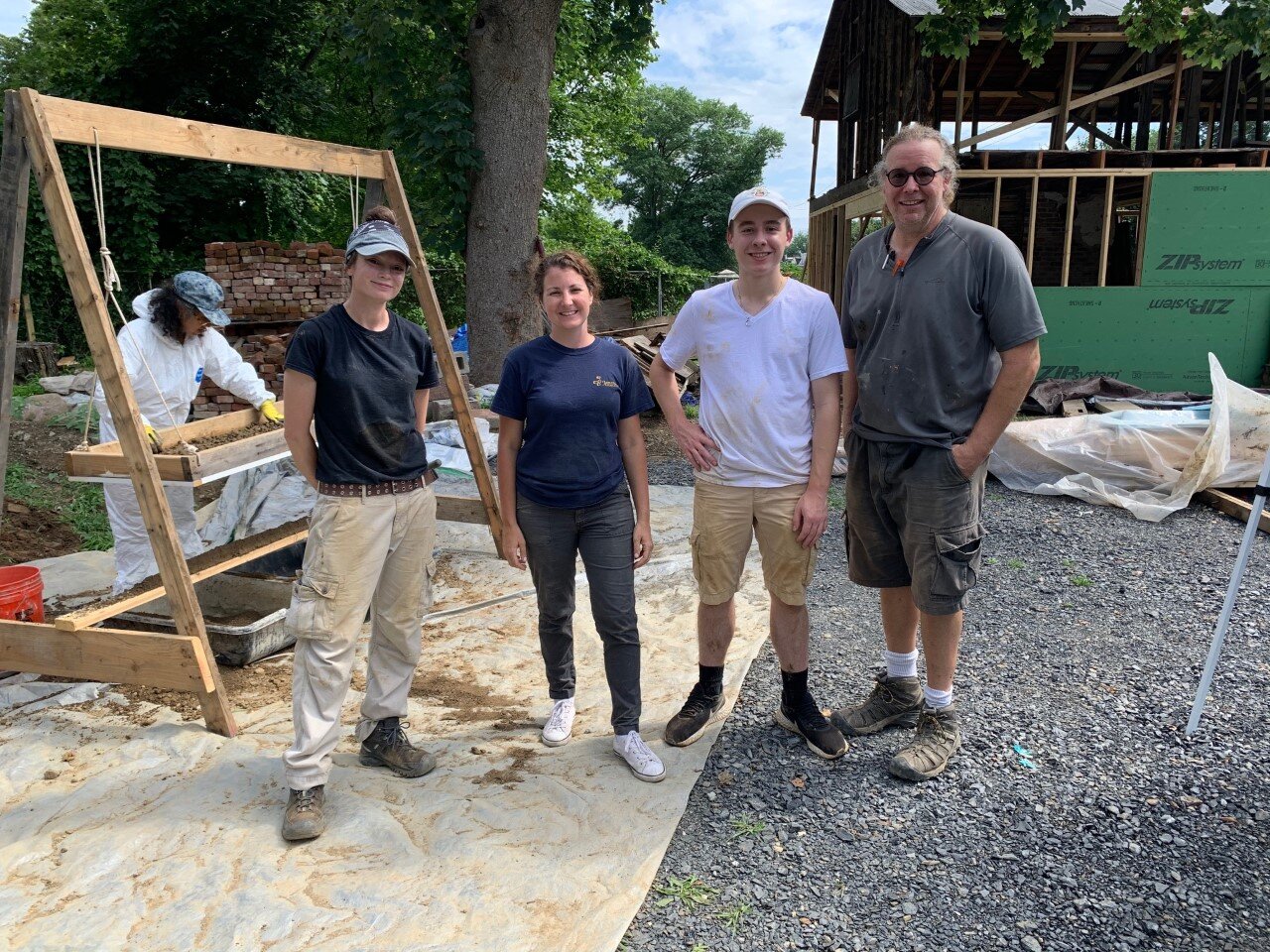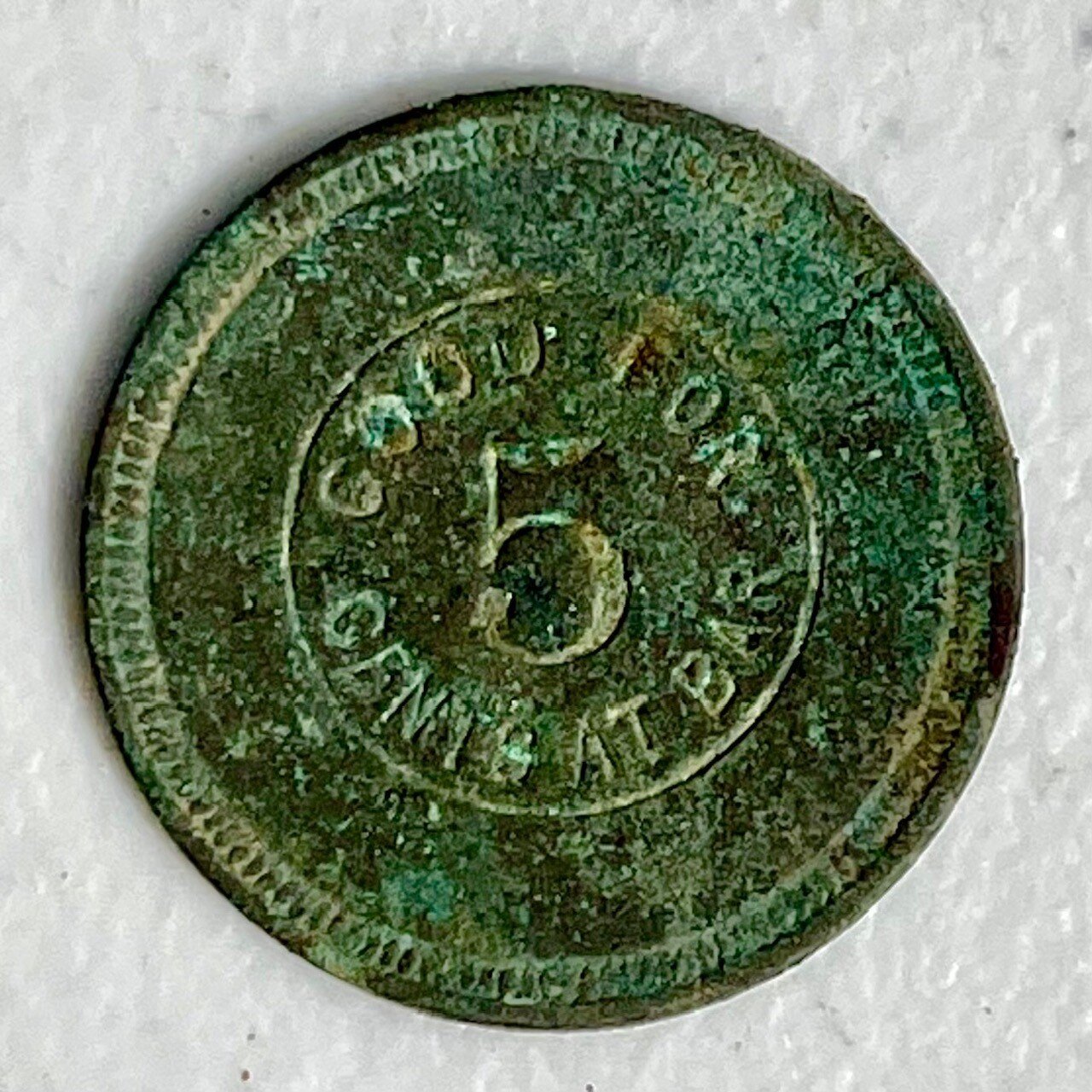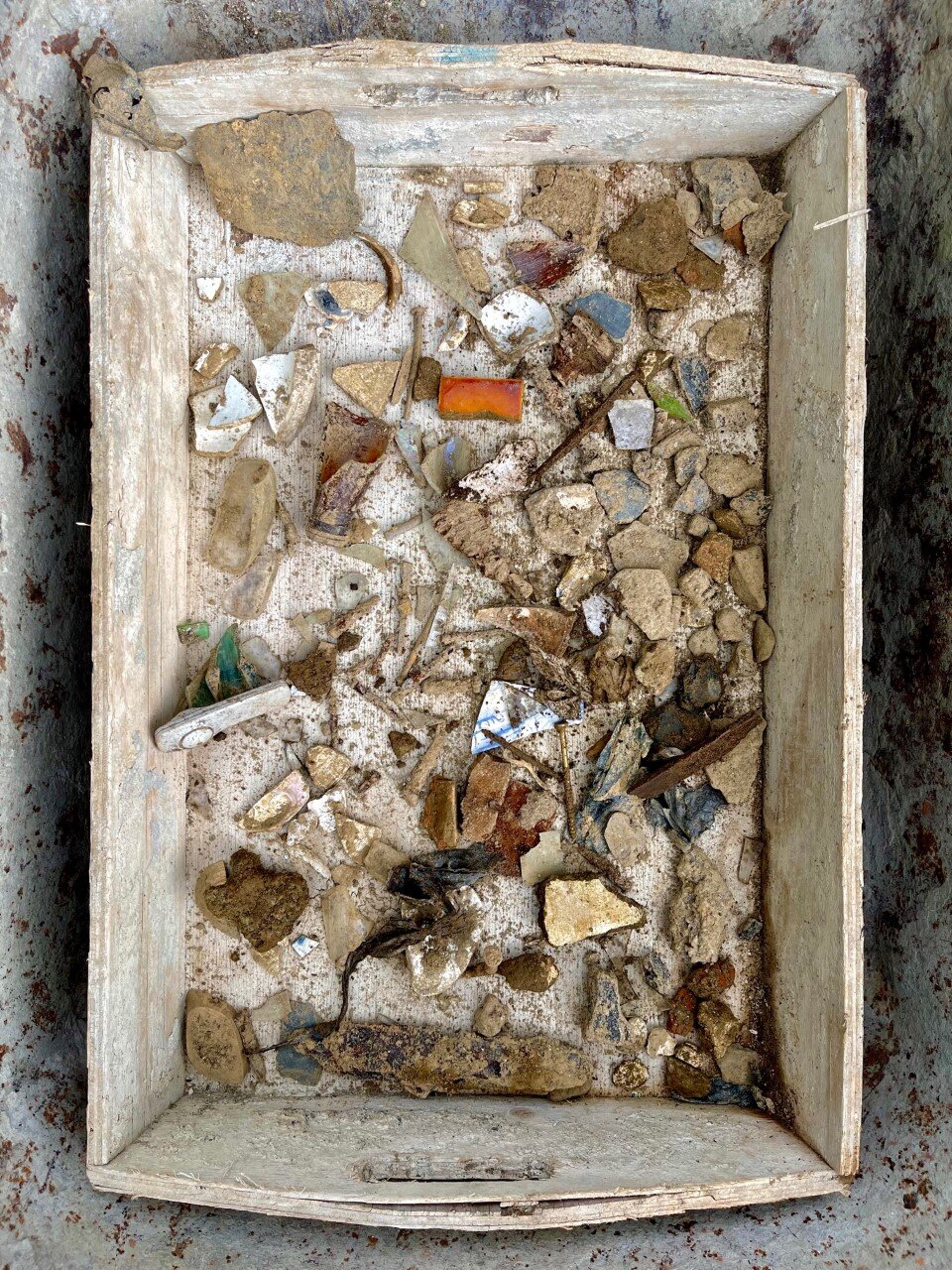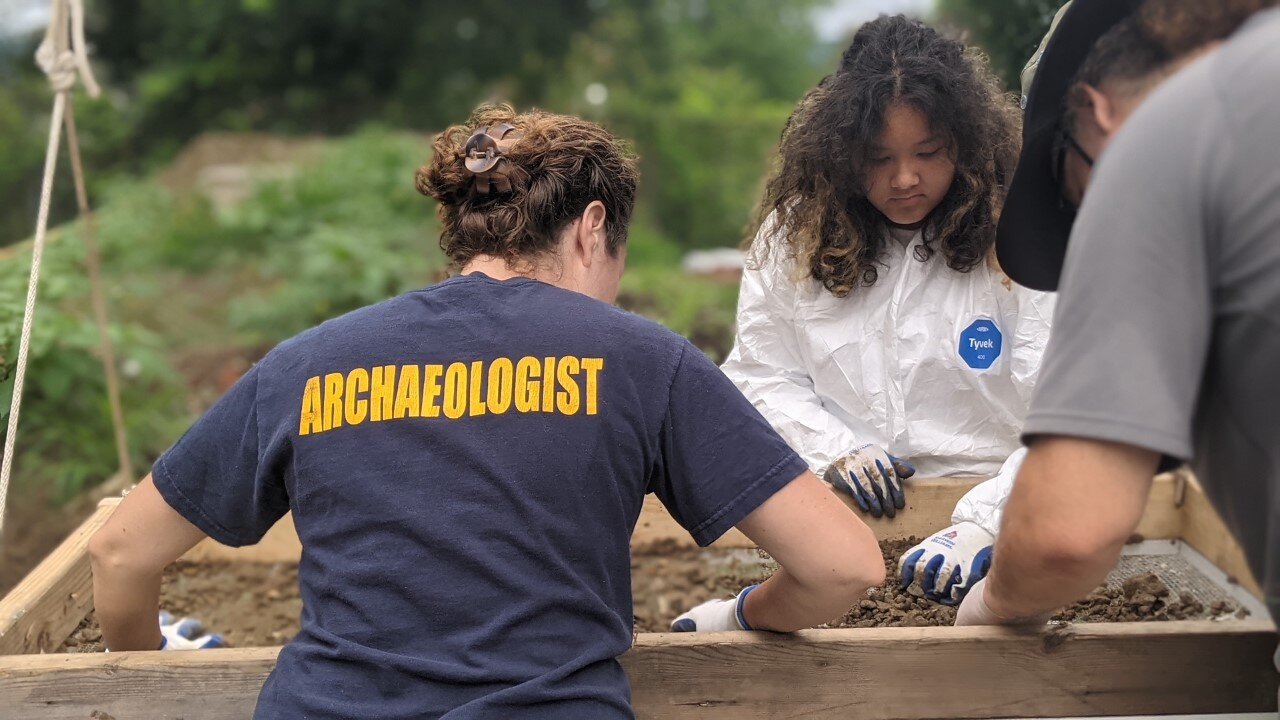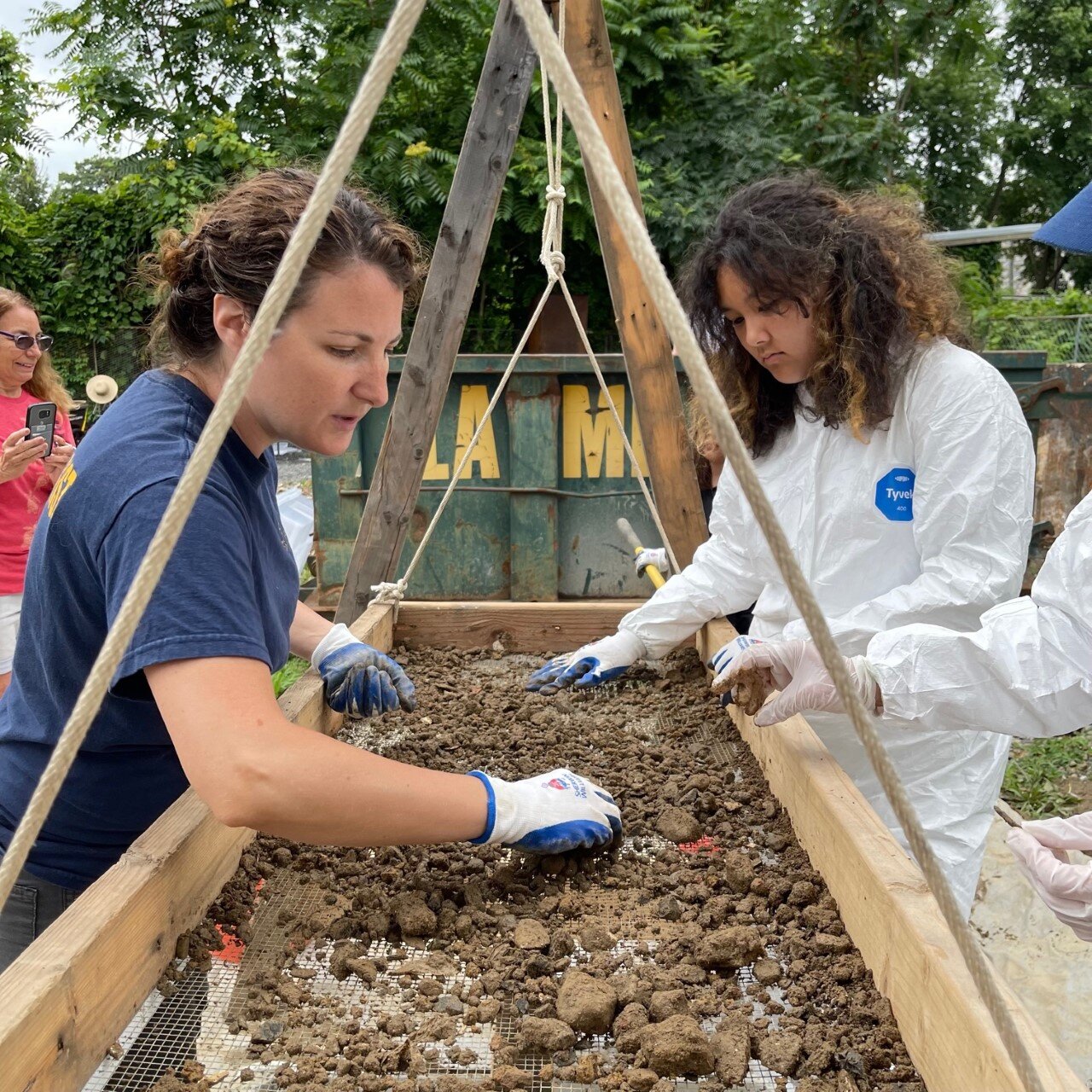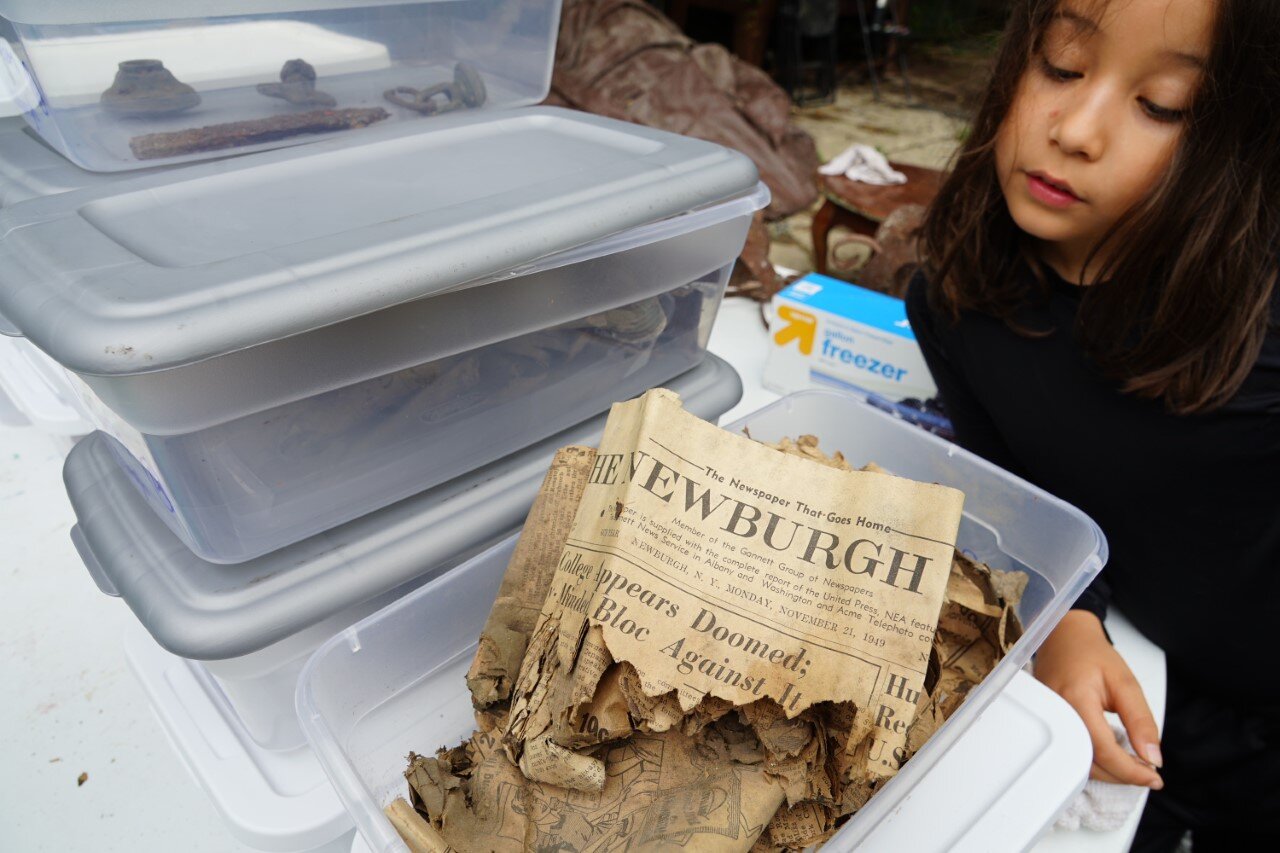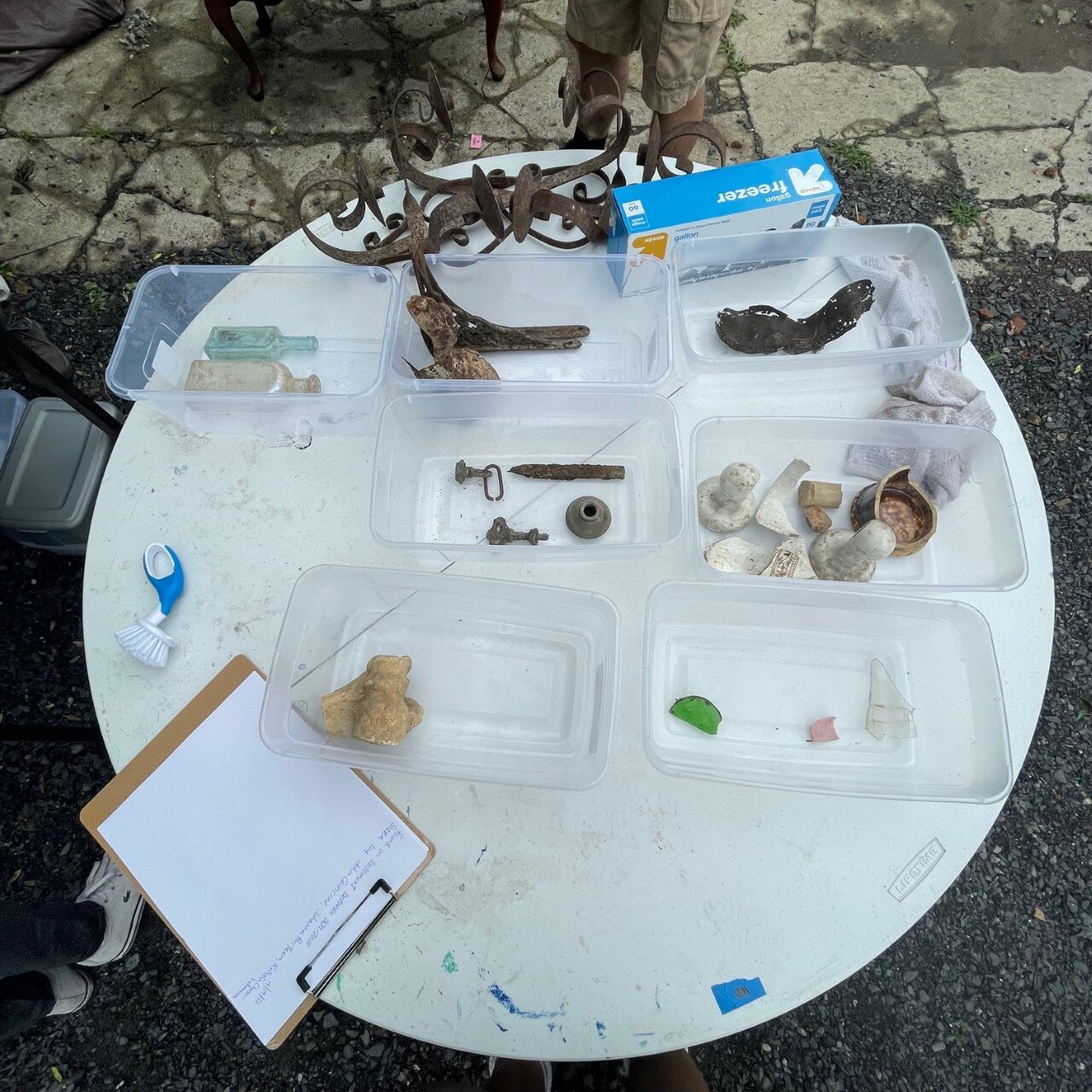300-year-old bits of history unearthed at Weigand's Tavern in Newburgh.
LANA BELLAMY | TIMES HERALD-RECORD
Published 5:01 a.m. EST Jul 26, 2021
CITY OF NEWBURGH — Hale Fisher was walking his dog on Liberty Street when he saw a sign for an upcoming archaeological dig at Weigand's Tavern, near his home.
Fisher, who called himself a "history nut," moved to Newburgh from Brooklyn three months ago. He'd been reading up on the history of the city. The public digging project seemed like the perfect opportunity to get acquainted with one of Newburgh's lesser-known historic gems.
"I saw the poster and was like, 'All right, that could be fun. I've got time on my hands,'" he said as he sifted through some of the dirt on July 22, the last day of the project.
A three-day dig at 326 Liberty St. attracted adults, kids and families, with people stopping by each day to sift through dirt that was taken out of the building's basement.
The tavern is being preserved and renovated by its owner, Thomas "Burr" Dodd.
Dodd, a painter, splits his time between Newburgh and Brooklyn. He's the founder of BFP Creative, which builds and preserves workspaces for creatives, such as artist studios and galleries in New York City.
Dodd has spent the past five years restoring Weigand's Tavern. The wooden building that dates back to the early 1700s is next to the Old Town Cemetery, where many of Newburgh's early settlers are buried.
While clearing out the old basement that had collapsed, Dodd thought to hang on to the leftover debris and dirt.
Though Dodd bought the property in 2016, he wasn't able to start work on the tavern for years because of rules that come along with having the State Historic Preservation Office involved and the nature of the project.
The property is within the East End Historic District, which is both a state and nationally recognized historic district. The East End Historic District is New York state's second-largest historic district,
After receiving the green light from the historic preservation office, Dodd teamed up with Orange County Historian Johanna Porr Yaun, a Newburgh native, to organize the public dig.
"There was this golden opportunity where SHPO had signed off on the work to proceed with the tavern, itself, and there was this leftover pile of dirt that under normal circumstances would've gone in a dumpster," Porr Yaun said while working at the site July 22.
Tavern lore debated
Much unconfirmed folklore surrounds the building, Porr Yaun noted. There's a longstanding local legend that the tavern served as a meeting spot for Gen. George Washington and his men to plot their campaign against the British.
It's still possible Washington liked to frequent the tavern, but Porr Yaun said the legend of Washington getting so inebriated there that he had to be thrown over the back of his horse and carted back to headquarters is unlikely to be true.
The 326 Liberty site was actually Martin Weigand's second tavern; his first opened in the 1760s on Broad Street. It was where many in Newburgh were asked to sign the Loyalty Oath, proving he or she was a Patriot during the days leading up to the Revolutionary War, Porr Yaun said.
Those who did not sign were exiled from the city and later resettled in a small Canadian town, she said.
The tavern on Liberty was built on glebe land, public land that was set aside by Britain's Queen Anne in 1709. Liberty Street was called Main Road and King's Highway before the end of the Revolutionary War. It's possible that people discarded everyday items, or what they deemed at the time to be trash, on the tavern property.
"When you think of it that way, that people were using this road to transport goods, to come to the post office, to pick up letters, to come and drink at the tavern, whether it's this exact structure or an earlier one that this one is now on top of. We don't really know," Porr Yaun said. "But that's what's so interesting. We're proving that people have been here just dropping things on the land all this time."
Historians can't nail down an exact date for when the current structure was built.
"But what the archaeology is really proving to us is that regardless of the building, we are looking at this long 300-year period of human life here," Porr Yaun said.
Unearthing bits of history
One of Hale Fisher's favorite finds was a round, multi-color lapel emblem. Fisher has also found some pieces of an embossed bottle and pottery fragments.
Off to the side of the dirt pile was a table organized with various trays. Artifacts found by volunteers were sorted into the tray based on the materials – building materials, metals, pottery and glass. A more recent find by Porr Yaun was a Newburgh Evening News newspaper from 1949.
Lisa Daily and her two grandchildren were there on July 22 using water and toothbrushes to gently scrub the dirt off the debris.
"I found something in a shell!" one of Daily's grandchildren called out. Porr Yaun said oysters from the Hudson River were a popular food item back in the day.
They also found several pieces of clay that come from the old pipes people would smoke in the tavern. When they were finished smoking, they would break off the end of the pipe so the next person could use it.
Dodd said he isn't quite sure yet what the tavern will be when it's finished. When he took it over in 2016, it had suffered 65 years of abandonment and neglect. It may become a home or have a room that people could rent for short periods of time on vacation. It could be a café.
"It will be a very cozy little place where you can sit, have your cup of coffee, smoke your pipe and look out over the cemetery," Dodd said. "I am very emotionally attached to this building. I am very emotionally attached to Newburgh."
lbellamy@th-record.com

